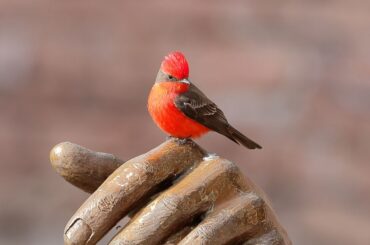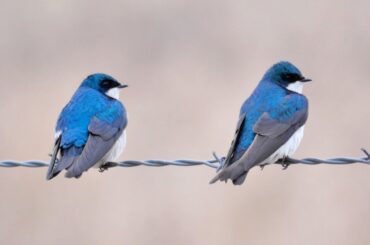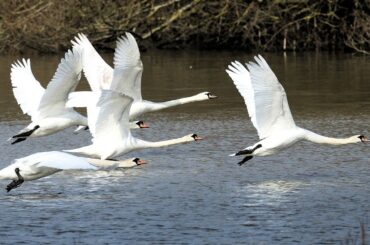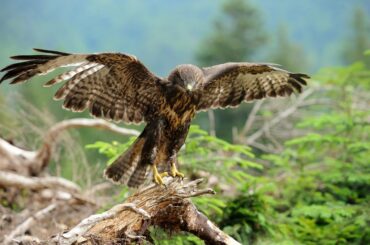Do you like birds or want to learn how to watch them in Michigan? Have you thought about the state’s birds? Michigan’s little birds are fascinating. Michigan has 42 species of birds, making it a fantastic destination for birdwatchers.
Each species of tiny bird in Michigan has its traits and activities. There are many wonders to explore, from the vivid eastern bluebird, famed for its striking blue plumage and enchanting singing, to the tiny ruby-throated hummingbird, whose wings beat 53 times per second.
What do Small Birds look like in Michigan?
Small birds in Michigan look and act in ways that are similar in several ways. First, these birds are usually small, measuring between 4 and 6 inches in length. They are cute because they have small bodies, short tails, and delicate features. Their feathers are many different bright colors, like blue, yellow, red, and green, which add a nice touch to the natural environment.
They can fly quickly and often show off their flying skills as they pass through trees and bushes.
These birds have beautiful voices and are known for their sweet, tuneful songs that fill the air with delightful sounds. They live in many different places, like woods, gardens, parks, and even cities, where they bring happiness and life.
Michigan’s backyard birds share standard features, such as petite size, vibrant colors, agile movements, melodic songs, and diverse habitats. They play an essential role in the ecosystem by contributing to pollination and insect control.
Observing these delightful creatures can be a source of joy and appreciation for nature’s beauty.
American Robin
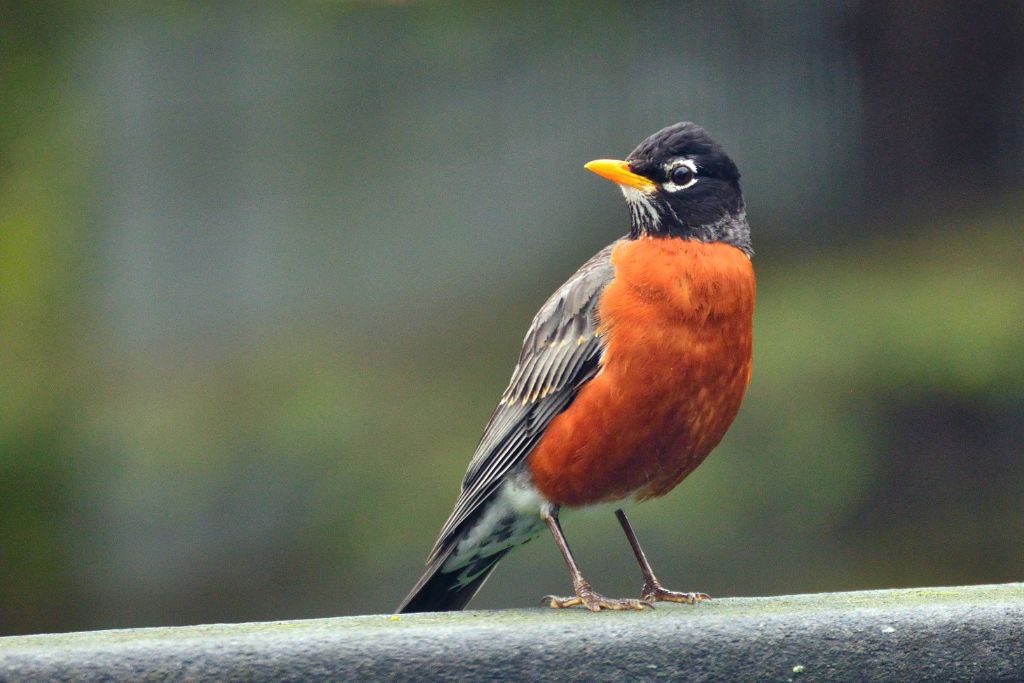
- Kingdom: Animalia
- Phylum: Chordata
- Class: Aves
- Order: Passeriformes
- Genus: Turdus
- Species: T. migratorius
The American Robin (Turdus migratorius) is a bird about 9 to 11 inches long and is middle size. It has a round body, a reddish-orange breast, a grayish-brown back, and a clear white ring around each eye. This species is known for its happy, melodic song, often heard in the early morning.
Robins have great hearing and can hear earthworms moving around underground. They dig worms and bugs out of the ground with their sharp beaks. They are often seen in forests, wooded places, parks, and neighborhoods. Worms, bugs, fruits, and nuts are what they eat.
Even though they are called robins, American robins are thrushes. One of the first birds to sing in the morning, their songs often signal the start of spring. Robins are known for the long distances that some walk to find food and an excellent place to raise their young.
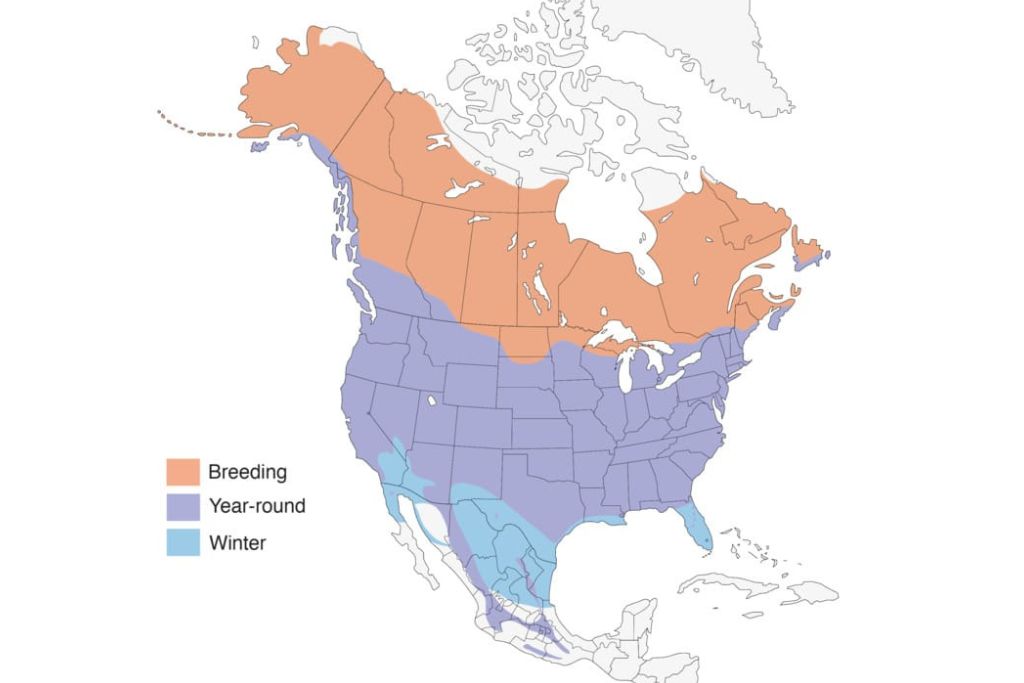
An American Robin lives about 2 years on average, but some have been known to live as long as 14 years. People often see them in suburbs, parks, gardens, and open fields. During the breeding season, they may also be found in forests where there are good places for them to nest.
Downy Woodpecker
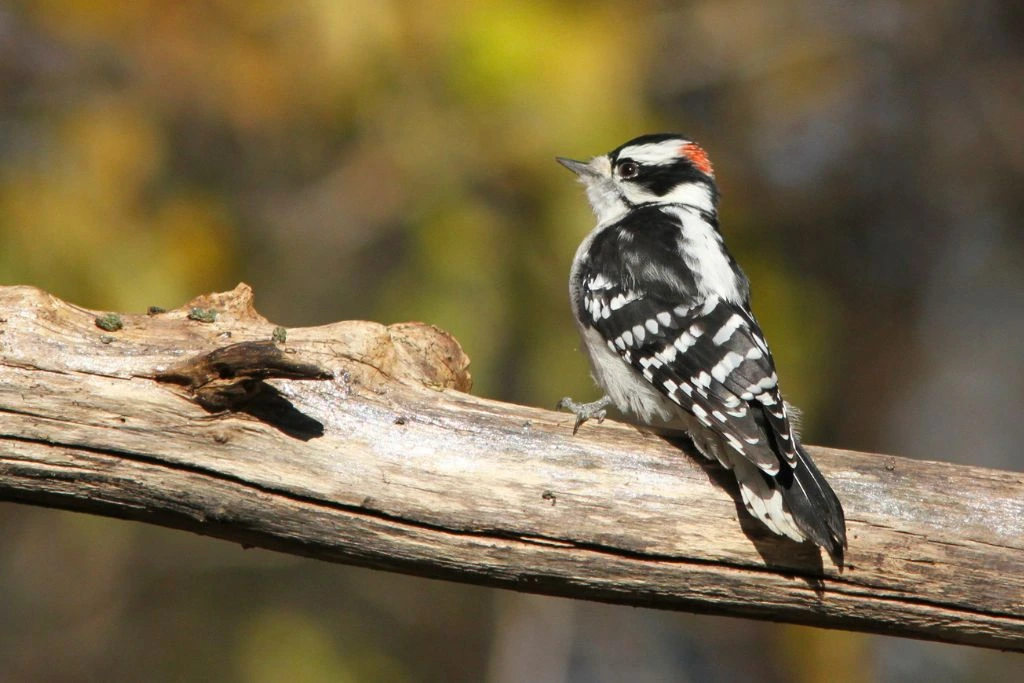
- Kingdom: Animalia
- Phylum: Chordata
- Class: Aves
- Order: Piciformes
- Genus: Picoides
- Species: P. pubescens
The 6- to 7-inch downy woodpecker (Picoides pubescens) is a tiny bird. Its feathers are black and white. Its tail and wings are dark with white dots. A red spot is on the male downy woodpecker’s head. These birds scale trees using their strong tails and chisel-like beaks.
Their drumming sounds distinguish them. Michigan is full of these birds since they thrive in the woods. Due to their powerful claws and distinctive head shape, they can attach to high surfaces and peck at trees to find insects and larvae.
Both parents feed their babies bugs as they hatch. After three weeks, the young woodpeckers fly away, but their parents continuously care for them.
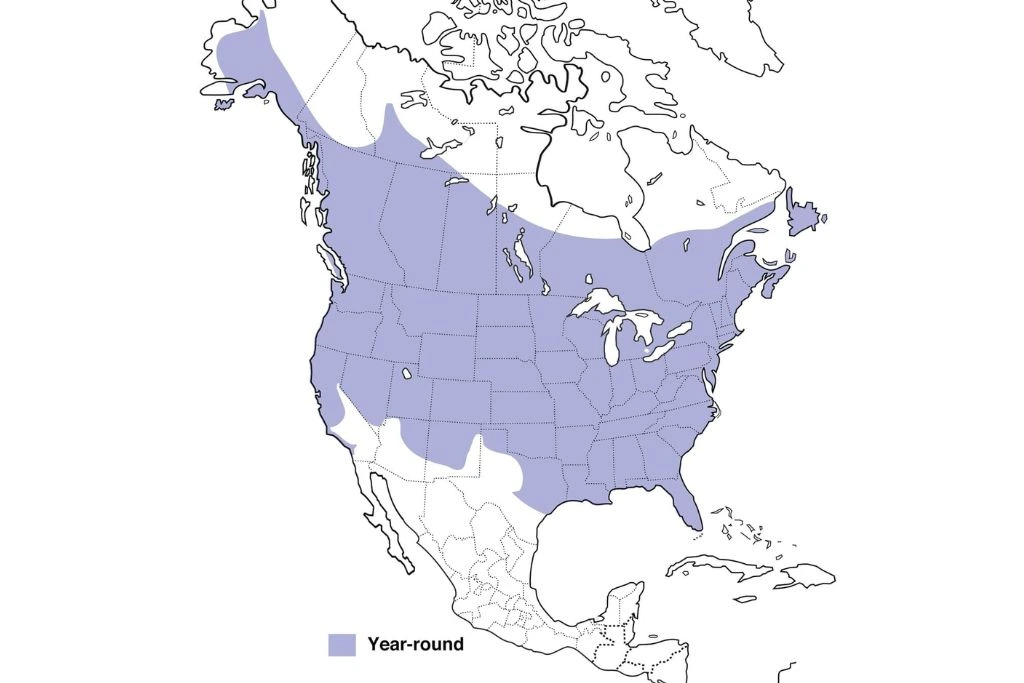
Even though they’re little, they can drum on tree trunks. They frequent bird feeders in people’s yards. Downy woodpeckers live 5 to 6 years in the wild. They can climb tree roots or fly to tree branches to find insects and other food. Bird feeders, especially those containing suet or sunflower seeds, attract them.
Hairy Woodpecker
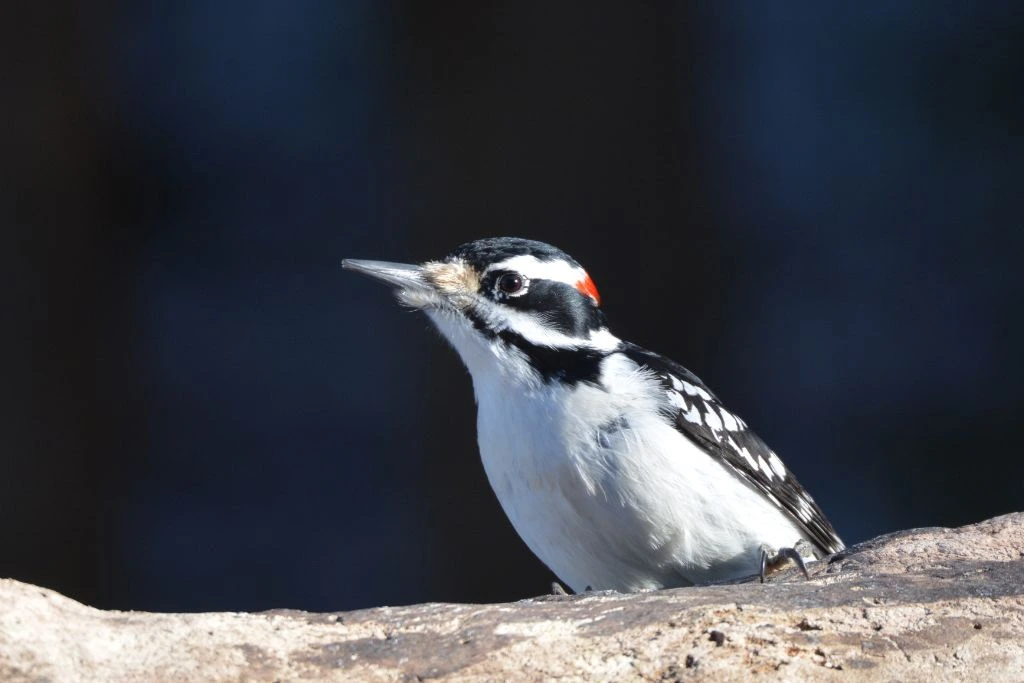
- Kingdom: Animalia
- Phylum: Chordata
- Class: Aves
- Order: Piciformes
- Genus: Picoides
- Species: P. villosus
The Hairy Woodpecker (Picoides villosus) is a 7 to 10 inch woodpecker. It looks like the downy woodpecker but is larger. The bird has a black tail, black wings with white patches, and a white belly. Like the downy woodpecker, the male hairy bears a red patch on its back. Their long, chisel-like beak and stiff tail help them climb and balance.
Michigan’s hairy woodpeckers thrive in forests. They peck trees for insects and larvae using their strong claws and reinforced skulls. Their long, barbed tongue pulls prey from tree crevices.
These woodpeckers forage on tree trunks and branches in deciduous and coniferous forests.
Like downy woodpeckers, hairy woodpeckers nest in dead or dying trees. Both parents incubate the Hairy Woodpecker’s 3 to 6 white eggs. After hatching, parents feed chicks insects and larvae.
Hairy woodpeckers can climb any tree. Unlike other woodpeckers, they drum slowly and purposefully. Hairy woodpeckers can tolerate freezing winters. 3 to 5 years is their lifespan in the wild.
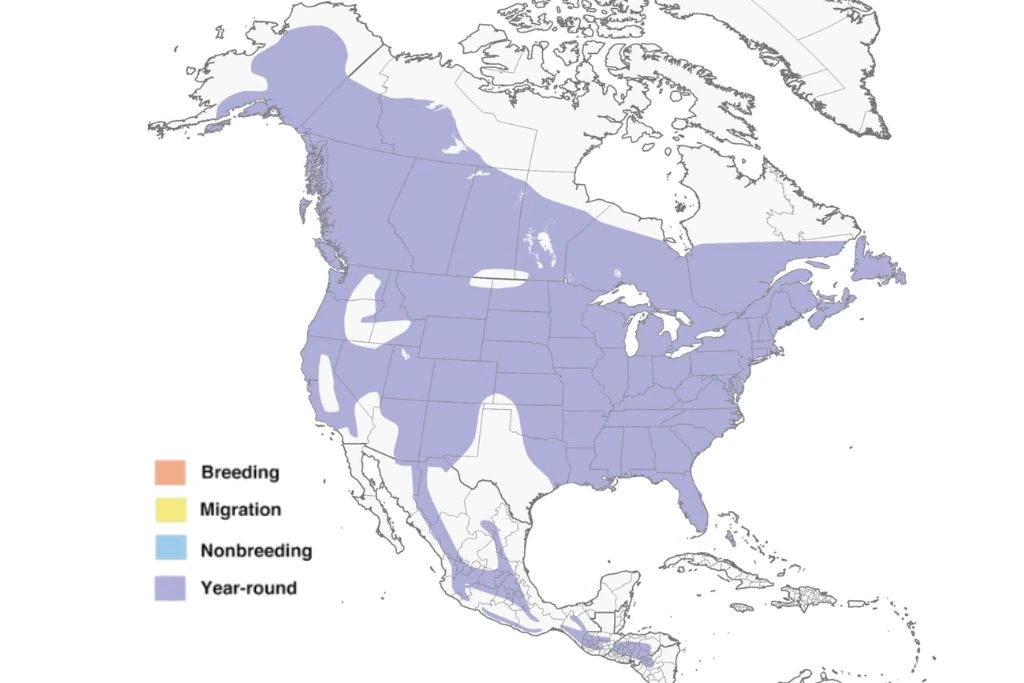
Michigan has several hairy woodpeckers. Mature deciduous and coniferous forests are their favorite. They search tree trunks for insects and drums to communicate. Suet and seed feeders in the suburbs attract them.
American Goldfinch
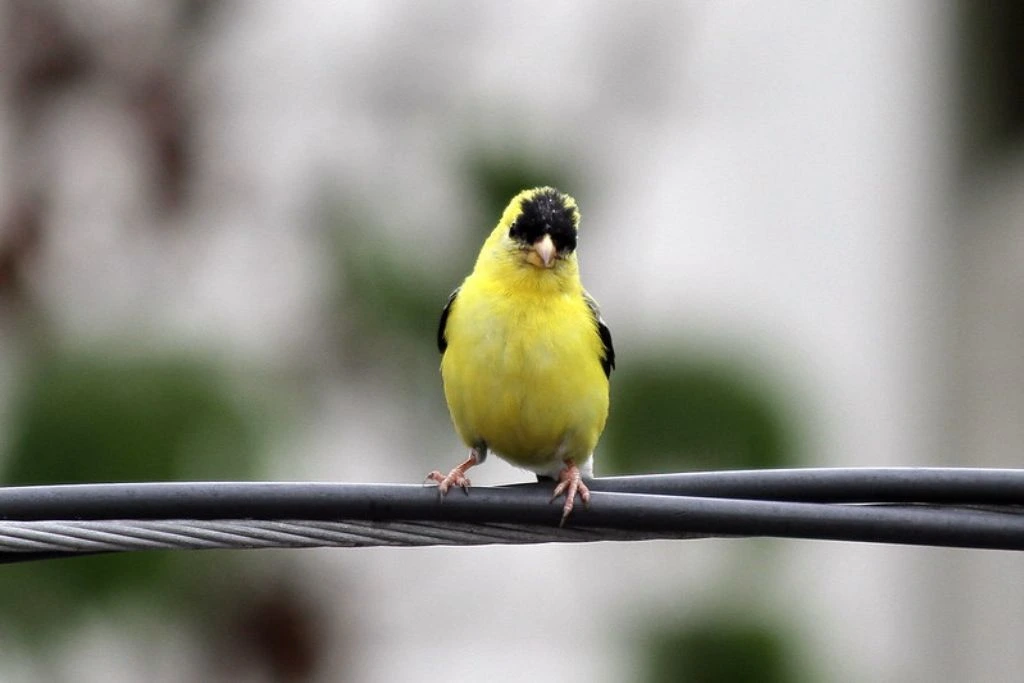
- Kingdom: Animalia
- Phylum: Chordata
- Class: Aves
- Order: Passeriformes
- Genus: Spinus
- Species: S. tristis
The American goldfinch (Spinus tristis) is a tiny songbird, measuring 4.5 to 5 inches. Males have vivid yellow plumage, black wings, and a black crown during the breeding season. Females and non-breeders are duller yellow with olive-brown wings. They feature an undulating flight pattern, a conical bill, and a thin body.
Across Michigan, these species are distributed in open fields, meadows, and woodland borders. They eat mostly seeds, notably thistle and other composite plant seeds. They may take seeds from plant seed heads with their bill. Goldfinches may also climb plants upside down to get seeds.
In late July, male American goldfinches shed their colorful breeding plumage and acquire a more muted appearance like the females. Their song is described as “per-chick-o-ree” or “potato-chip.” American goldfinches are flocking birds, especially in fall and winter.
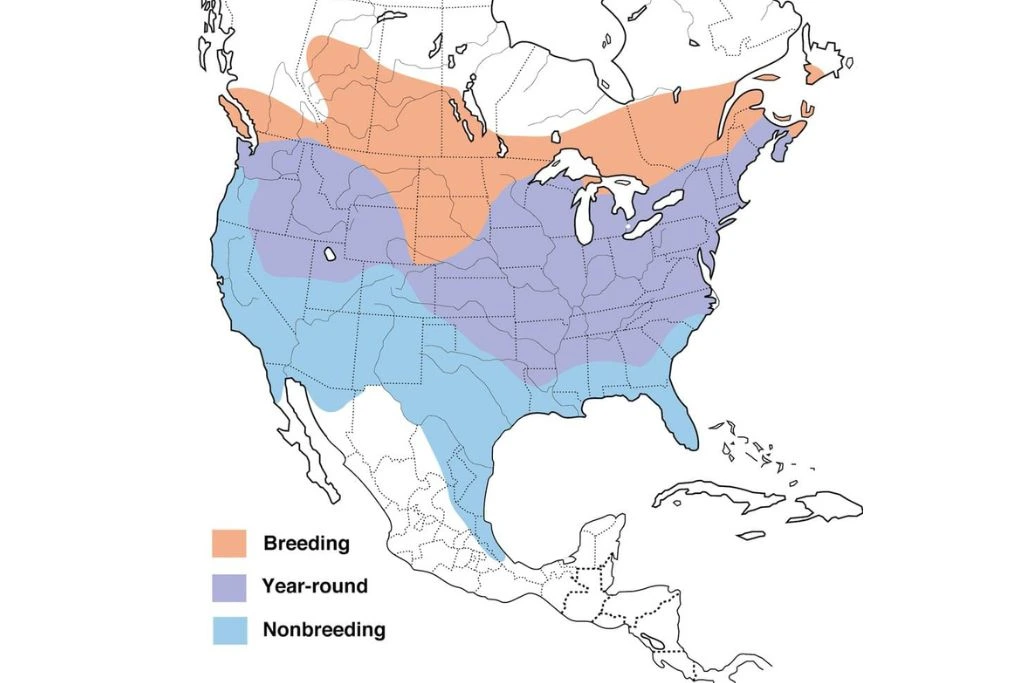
They are common in Michigan’s farms, meadows, gardens, and open forests. They prefer locations with lots of flowers and seeds. Sunflower and thistle (nyjer) seed feeders attract goldfinches.
House Sparrow
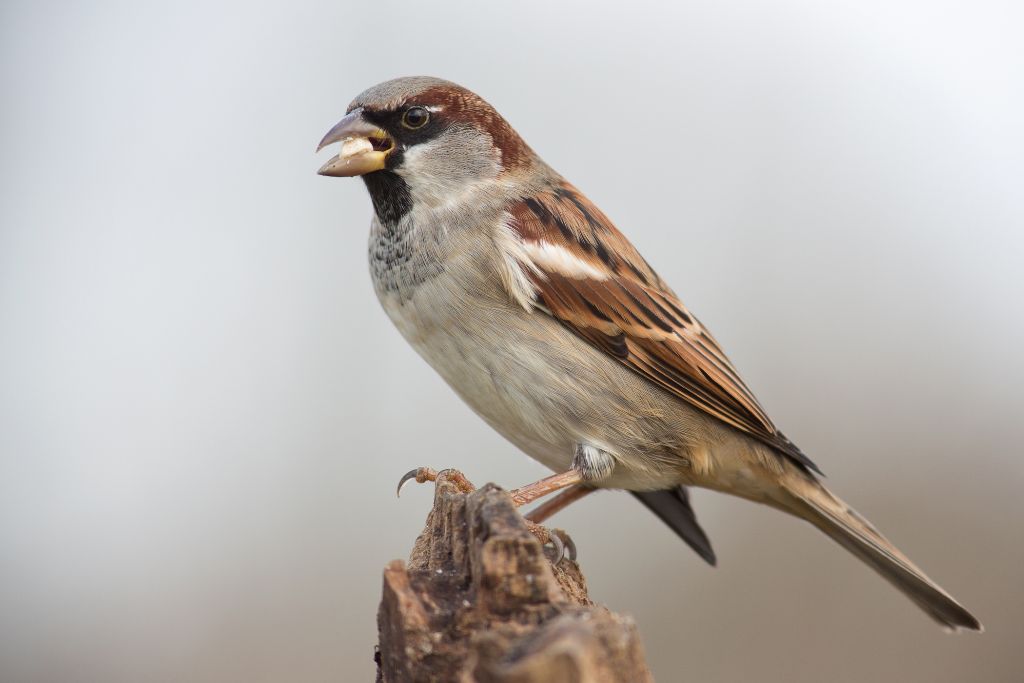
- Kingdom: Animalia
- Phylum: Chordata
- Class: Aves
- Order: Passeriformes
- Genus: Passer
- Species: P. domesticus
House sparrows (Passer domesticus) are small birds that are about 5.9 to 6.7 inches long. Their bodies are fat, and their bills are shaped like cones. The males have gray heads, black patches on their throats, and brown napes and wings. The females’ feathers are duller and have streaks on their undersides.
They do well in many different places in Michigan, such as cities, towns, farms, and grasslands. House sparrows are very flexible. They eat seeds, grains, insects, and food scraps from people.
They build their nests in holes in trees or buildings; each clutch has between 4 and 7 eggs. Both parents take care of the babies and feed them seeds and bugs.
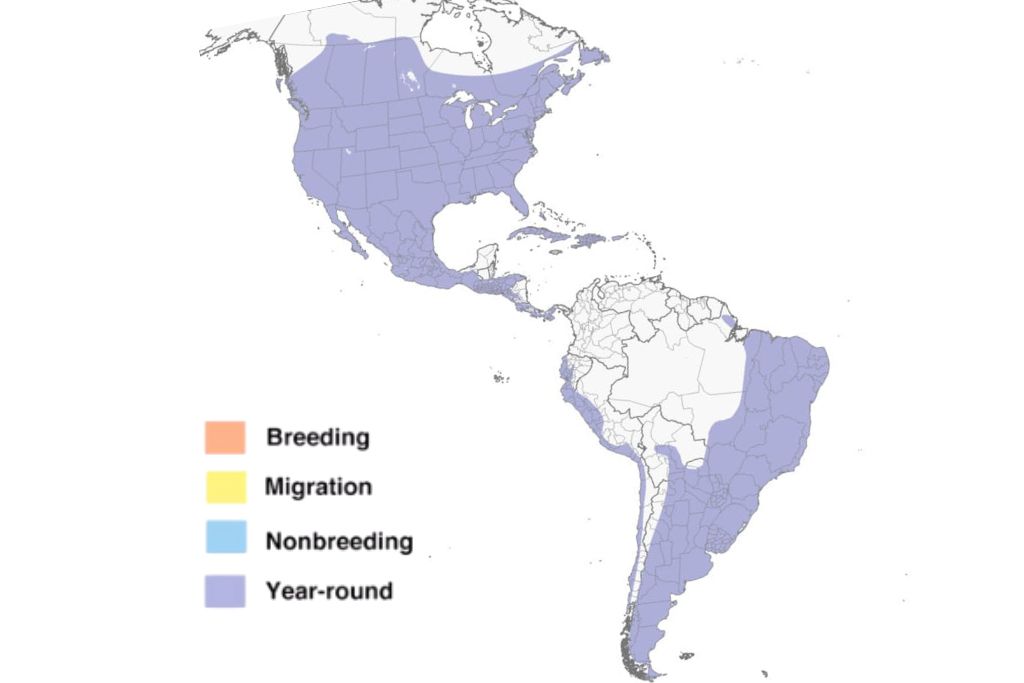
House sparrows are interesting because they were brought from Europe and have become one of the most common bird types in the world. They are social birds that like to hang out in big groups and sleep together at night.
House Finch

- Kingdom: Animalia
- Phylum: Chordata
- Class: Aves
- Order: Passeriformes
- Genus: Haemorhous
- Species: H. mexicanus
The House finch, also known as Haemorhous mexicanus, is a small bird, around 5 to 6 inches long, with a loud song. This species is everywhere in the towns and suburbs of Michigan. They like to come to bird feeders and other places outside. Their beautiful songs and feathers are an excellent addition to suburban neighborhoods.
Males have colorful feathers. The crown, breast, and back are all red or orange-red. On the other hand, the females have a more modest look, with brown and white stripes. Both males and females have curved bills perfect for cracking open seeds.
House finches were born in Western North America, but they now live all over the United States because people brought them in as pets and let them escape. Their bright red color comes from the pigments in their foods, making their feathers look better. In the wild, a house finch will live for about five years.
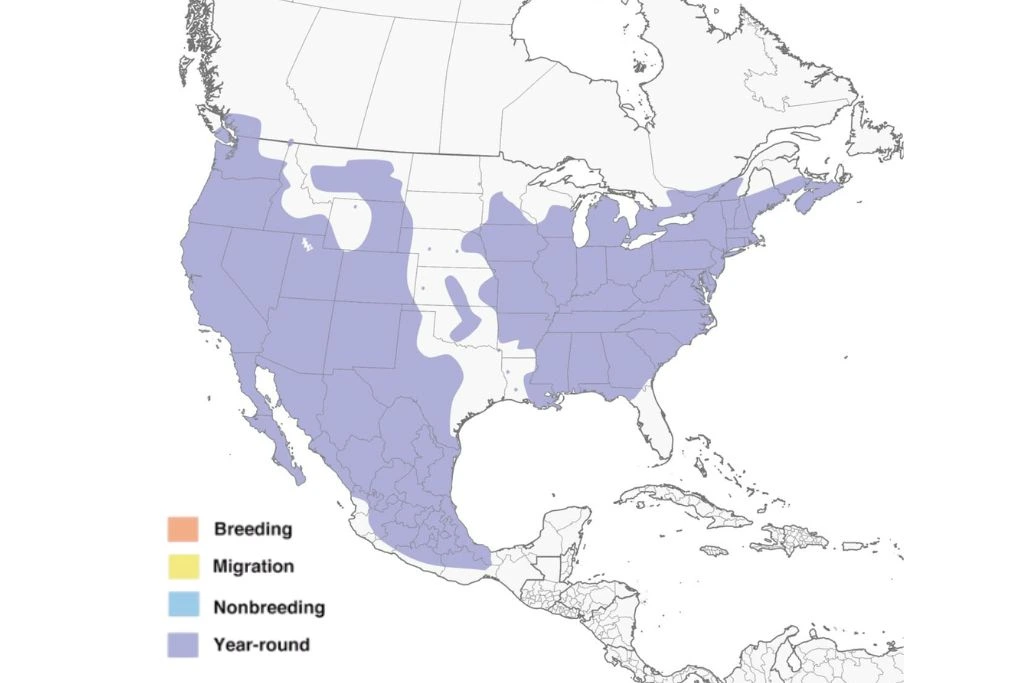
People know these birds can open hard seed shells with their strong beaks. Most of their food comes from seeds, fruit, and nuts. House finches are used to eating from bird feeders, especially ones with sunflower and nyjer seeds.
Calliope Hummingbird
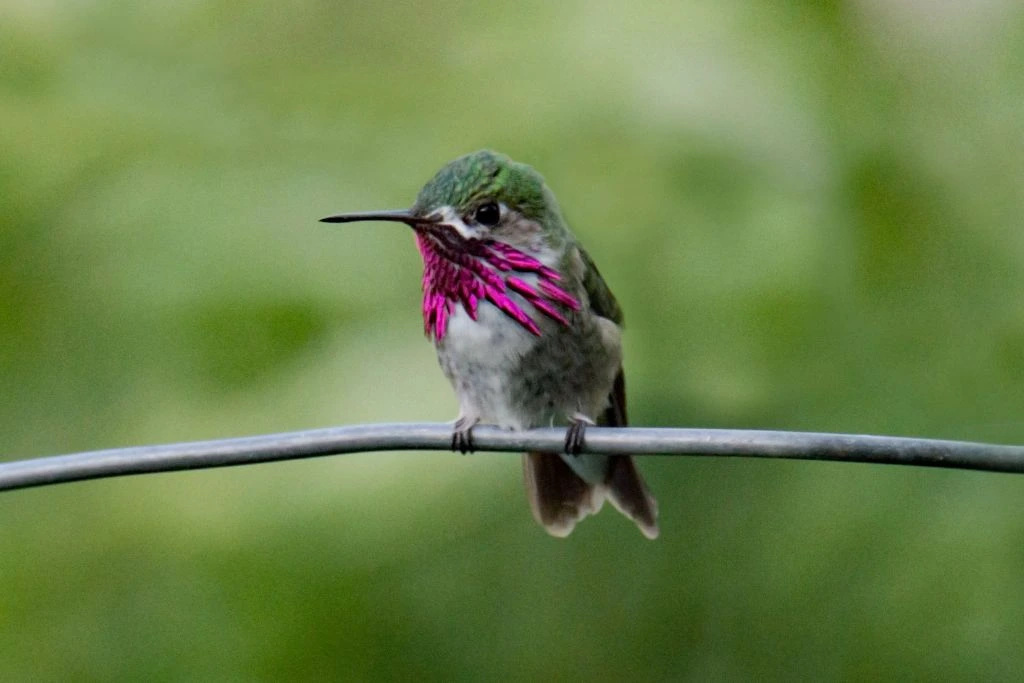
- Kingdom: Animalia
- Phylum: Chordata
- Class: Aves
- Order: Apodiformes
- Genus: Selasphorus
- Species: S. calliope
The Calliope Hummingbird (Selasphorus calliope) is about 3.5 inches long and is a small bird. It has bright colors on its body. Its throat is fuchsia, its back is green, and its underside is white. Males have side stripes that make them stand out, while females look more plain. Their long, thin bills help them get juice from flowers.
They are well-suited to their lifestyle of living on nectar. They can get nectar deep inside flowers because of their long bills and mouths. They can also fly well and hover and dart between flowers accurately. They live in open forests, meadows, and mountain places with many flowering plants.
Most often, they nest on horizontal trees near water. After 16 to 18 days, females care after two to three eggs. Chicks receive honey and insects from both parents. After 20 to 23 days, baby hummingbirds can fly.
Calliope hummingbirds are the smallest birds that migrate long distances. They spend the winter in Mexico and breed in western North America, including Michigan. Their buzzing call, which sounds like a metallic chirp, makes them easy to spot.
Even though they are small, some of these hummingbirds can live for up to 10 years, which is a very long time. On average, a calliope hummingbird lives between 3 and 4 years, but some have been known to live up to 10 years in the wild.
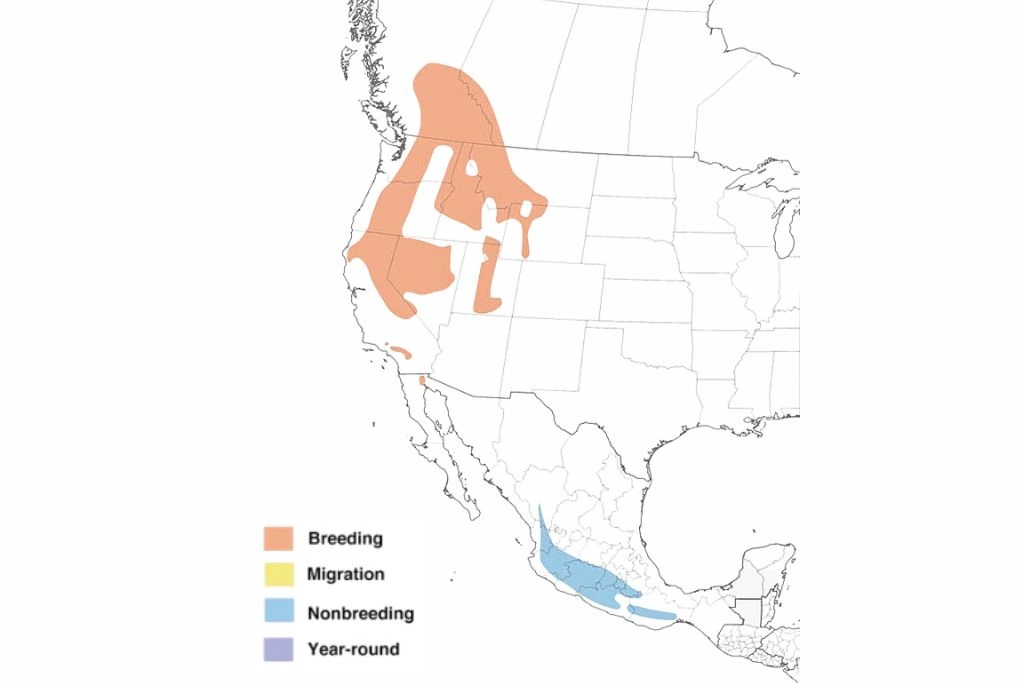
Michigan rarely sees the calliope hummingbird during mating season. They live primarily in the west of North America, especially in steep places. You’ll see them in fields, woods, or flower gardens if you’re lucky. Keep a watch out for their vibrant colors and unusual buzzing cries in Michigan’s outdoors.
American Crow
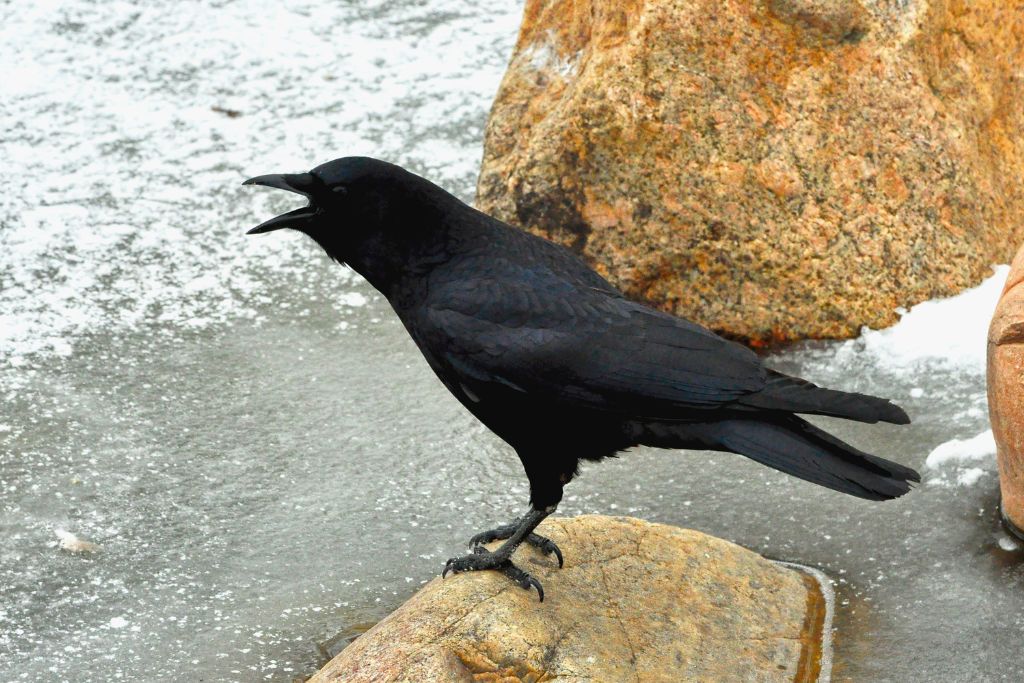
- Kingdom: Animalia
- Phylum: Chordata
- Class: Aves
- Order: Passeriformes
- Genus: Corvus
- Species: C. brachyrhynchos
American Crows (Corvus brachyrhynchos) are very social birds that are often seen in big groups called murders. They have a lot of different social habits, like roosting together and chasing away predators as a group. Crows are good at finding solutions to problems and have been seen using tools in the wild. Some can live up to 20 years, which is a long time for a bird.
These small birds in Michigan are good at living in various places such as woods, woodlands, farmlands, and cities. They eat anything they can get their hands on, like dead animals, insects, veggies, seeds, and food scraps from people. Their strong beaks and feet let them move and get food from many places.
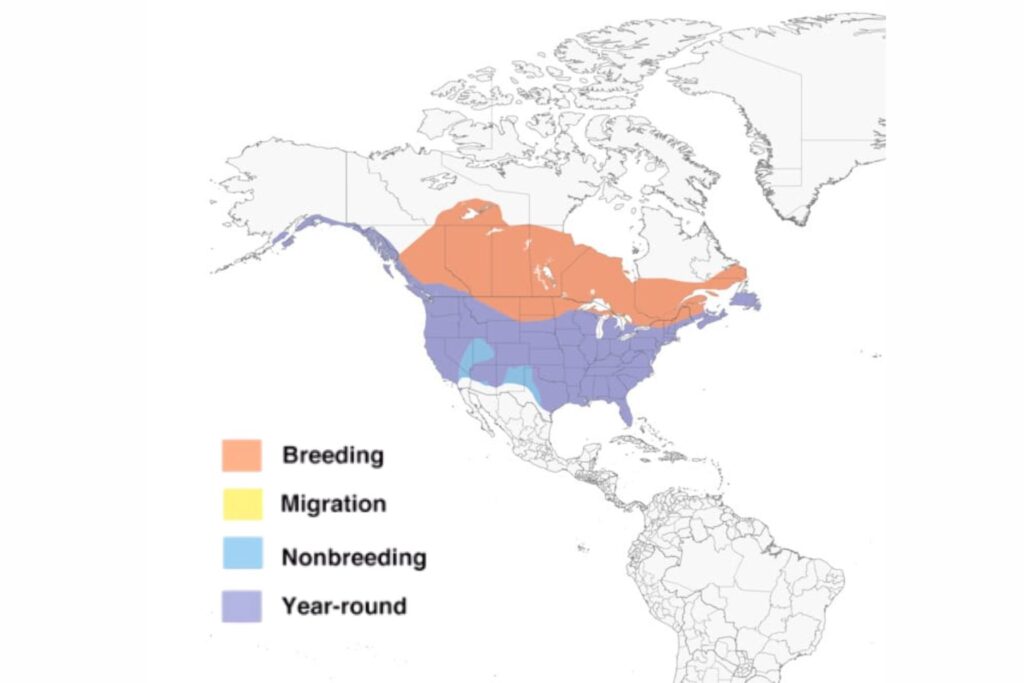
Its body is all black, its beak is thick, and its wings are strong. Crows are smart and flexible birds with a loud cawing call that is easily recognizable. They are strong and can often be seen walking on the ground or sitting in trees.
Song Sparrow
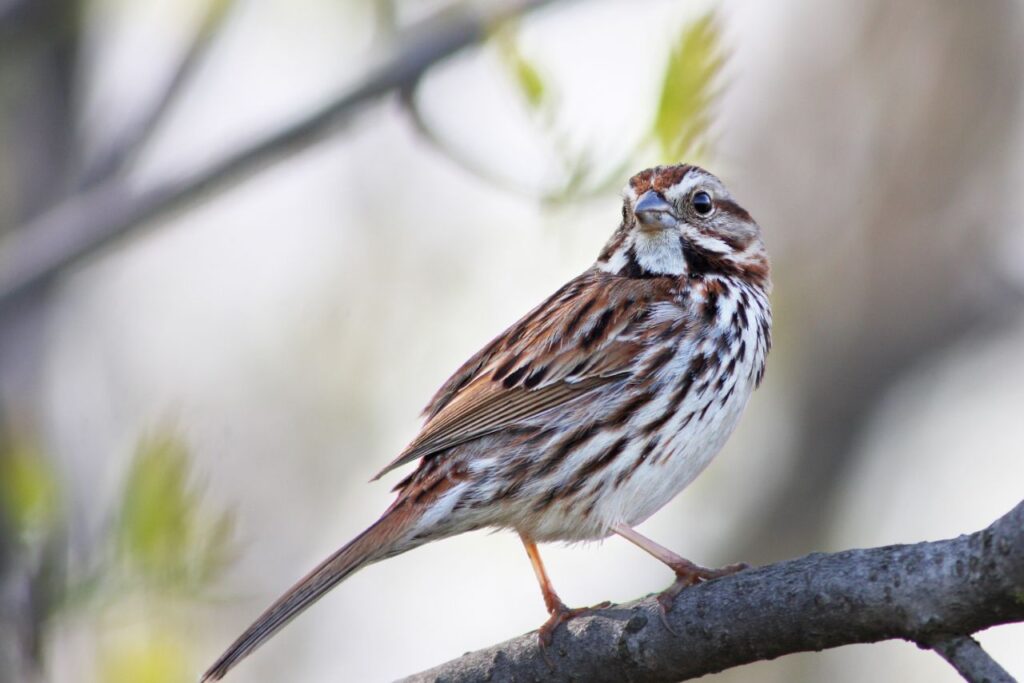
- Kingdom: Animalia
- Phylum: Chordata
- Class: Aves
- Order: Passeriformes
- Genus: Melospiza
- Species: M. melodia
The Song Sparrow (Melospiza melodia) is a small bird that is between 5 and 7 inches long. It has a fat body with brown and gray feathers, marked with dark brown or black lines. It normally has a dark spot in the middle of its breast and streaks around it.
Male song sparrows sing a unique, melodic song that differs for each bird. Most small birds in Michigan are flexible and adaptable birds that live in a wide range of places in Michigan, such as marshes, rivers, grasslands, gardens, and shrubby areas.
They use their long legs to walk along the ground, searching for insects, seeds, and small animals near water sources. This is because they have evolved to do well in places near water. Their beaks are good for breaking open seeds and getting bugs out of plants.
Each male song sparrow has its song to mark and protect its territory. These songs are taught to them by their dads, and they change in small ways that make them easy to recognize.
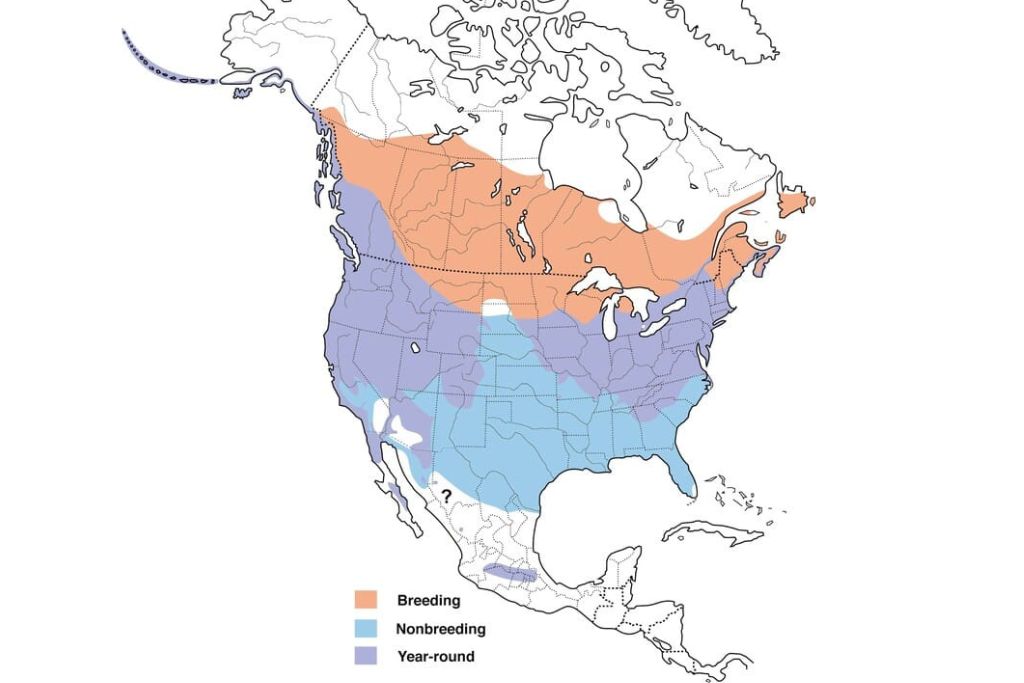
Song sparrows live all year long in many places in Michigan, but some may move short distances during harsh winters. In the wild, they live for about 2 to 3 years.
These are common birds all over Michigan and can be found in many different places near water. They are often seen in wetlands, marshes, fields, and along the edges of lakes, rivers, and streams.
White-Breasted Nuthatch
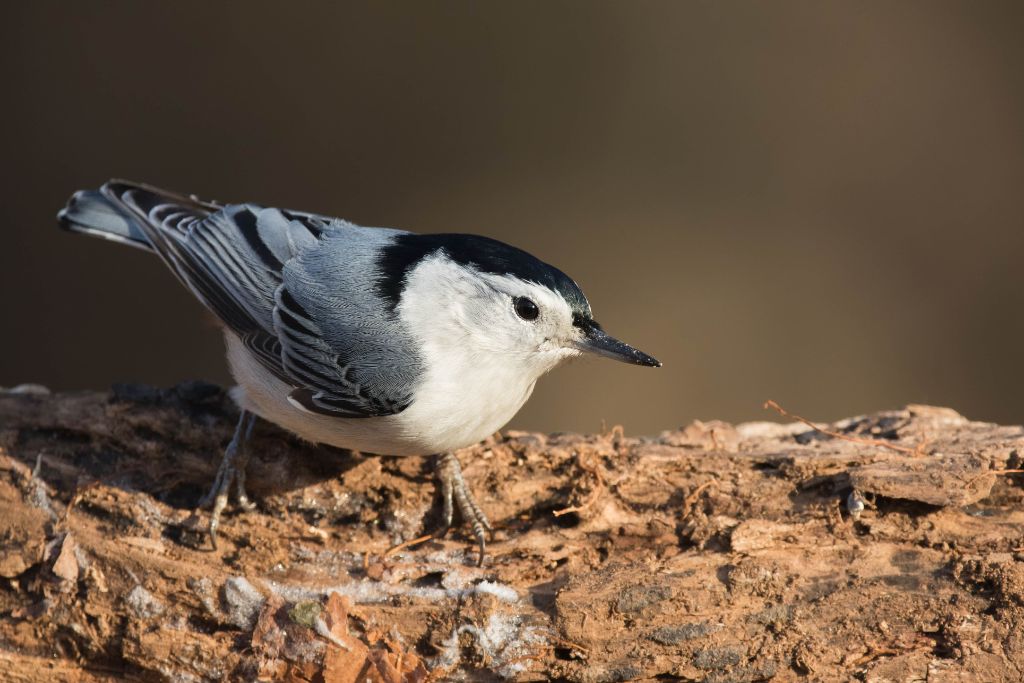
- Kingdom: Animalia
- Phylum: Chordata
- Class: Aves
- Order: Passeriformes
- Genus: Sitta
- Species: S. carolinensis
White-breasted nuthatch (Sitta carolinensis) is a little bird, only reaching a length of about 5.5 to 6 inches. Its body is small and stocky, and its black-and-white pattern is easily recognizable. There is a bluish-gray color on top and a white paint underneath.
Their long, straight bill and powerful feet allow them to navigate tree trunks and branches skillfully. They use a nasal “yank-yank” sound in their calls.
They like to eat insects and seeds off tree bark. Therefore, they are most at home in wooded settings. Suet, sunflower seeds, and peanuts in bird feeders attract them. Their unmistakable calls and acrobatic antics make them easy to spot in the woods.
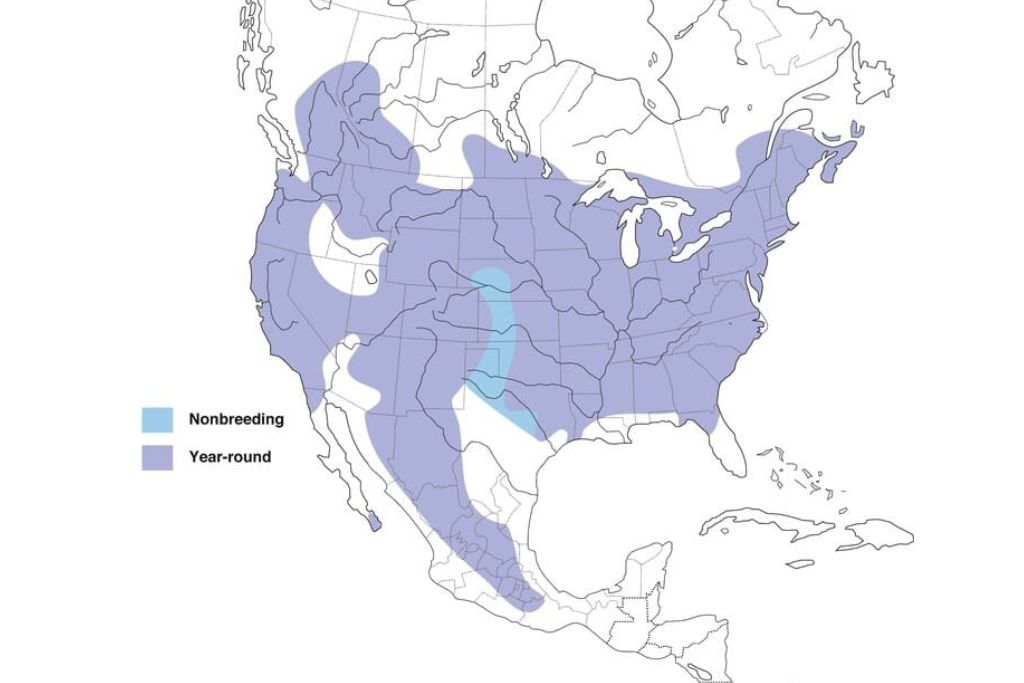
The White-breasted Nuthatches are the only birds that can be seen walking headfirst down tree roots. The “hatching order” of the chicks in a brood makes it easier for the parents to care for and feed them. The unique nasal call of these nuthatches makes them easy to spot. It sounds like a little horn.
European Starling
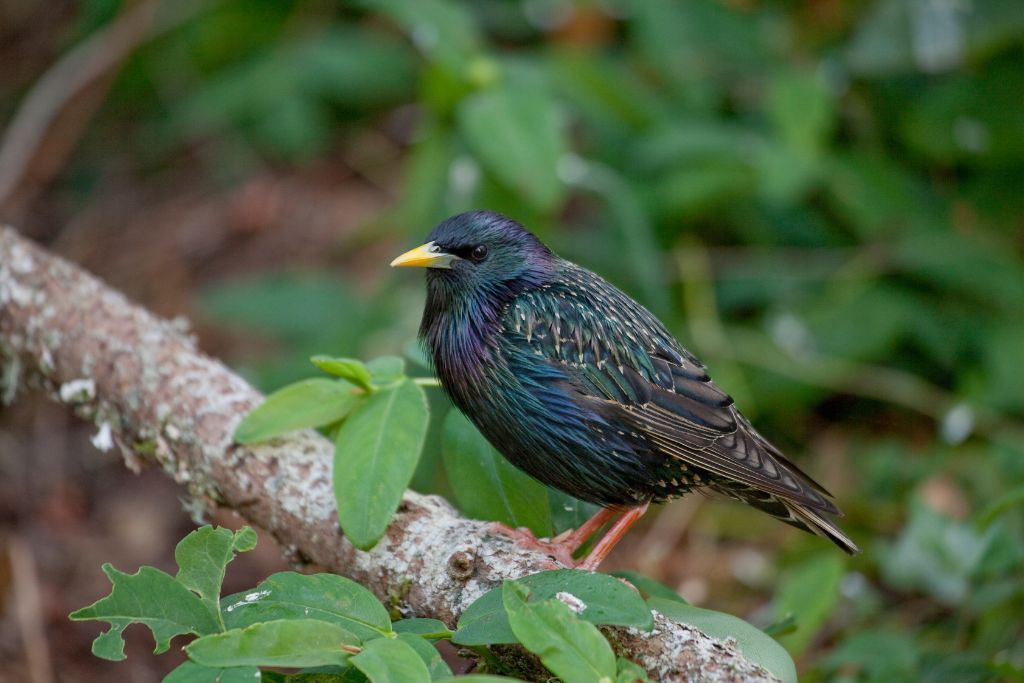
- Kingdom: Animalia
- Phylum: Chordata
- Class: Aves
- Order: Passeriformes
- Genus: Sturnus
- Species: S. vulgaris
The European starling (Sturnus vulgaris) is a bird that is between 7 and 8 inches long. It is bulky and has a short tail and a thin, pointed beak. The starling’s non-breeding plumage is primarily dark, with a shiny black look and white spots.
During the breeding season, the feathers get a shiny sheen that makes them look green and purple. They make different sounds, like whistles, chatters, and imitations of other birds. They gather in big groups, especially when they aren’t breeding. Their synchronized flight patterns, called murmurations, are amazing to watch.
In the wild, European starlings live for about 3 to 5 years. Starlings eat various foods, including insects, fruits, berries, seeds, and trash or food scraps. They have a strong bill that lets them look for food in the ground or among plants.
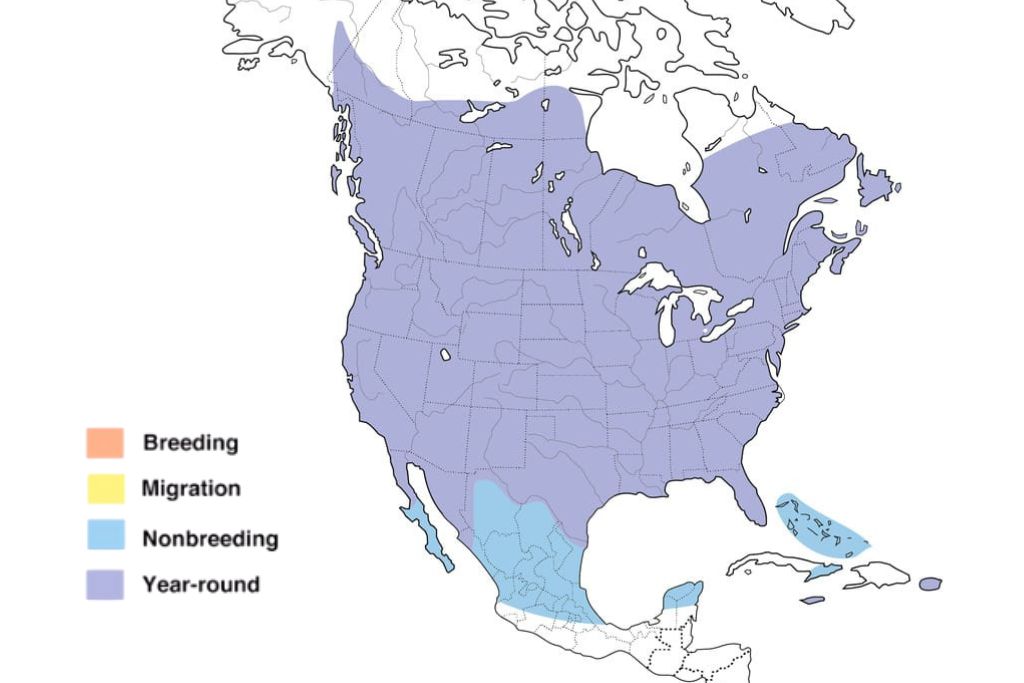
They can be found in various places, such as cities, farms, open woods, and pastures. People often see them foraging on the ground or sitting on lines or trees. European starlings eat whatever they can find and are drawn to places with a lot of food, like lawns, parks, and farming fields.
Brown-headed Cowbird
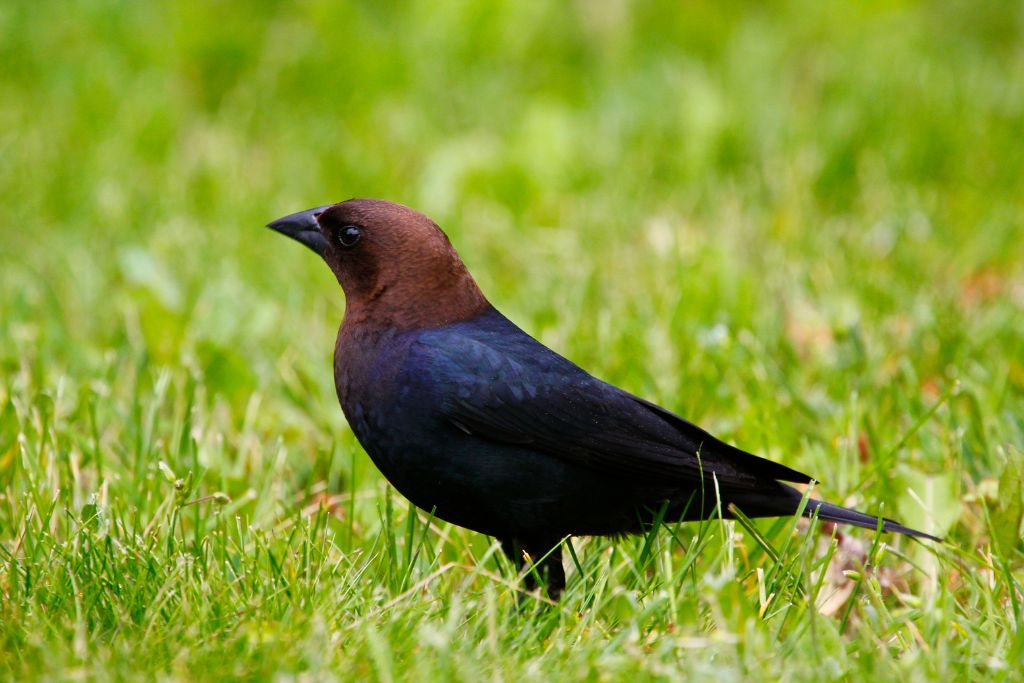
- Kingdom: Animalia
- Phylum: Chordata
- Class: Aves
- Order: Passeriformes
- Genus: Molothrus
- Species: M.ater
The Brown-headed Cowbird (Molothrus ater) is a medium-sized bird measuring 7 to 8.5 inches long. It has a stocky build with a short, thick bill. The males have a glossy black plumage, while the females have a light brown body with a darker brown head.
Both genders have distinct red or brown eyes. Their wings and tails are relatively short compared to other songbirds. The plumage of juvenile cowbirds is similar to that of females, with lighter brown streaks.
Brown-headed Cowbirds do well in open places like fields, pastures, grasslands, and the edges of woods. They have a unique way of reproducing called “brood parasitism,” meaning they lay their eggs in the nests of other bird species.
Because of this change, Cowbirds don’t have to spend time and energy making nests and caring for their young. They like to live in places where feeding mammals are because insects are easier to find when they are disturbed.
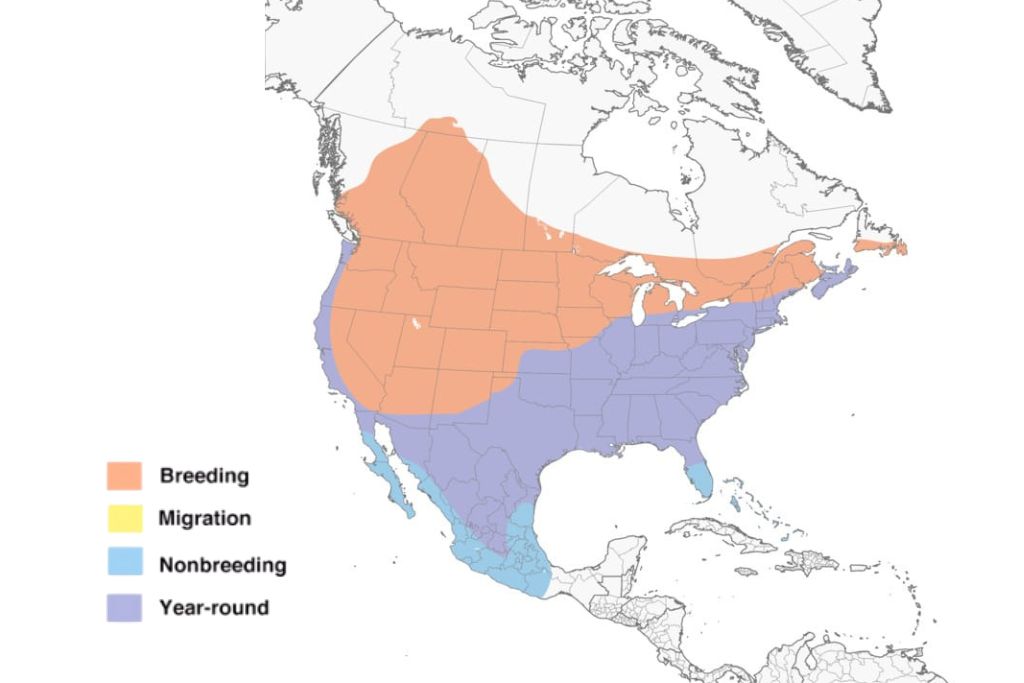
People often see them looking for bugs and seeds on the ground. They can also be seen near the nests of smaller songbirds, keeping an eye out for good nesting spots for possible host species. Cowbirds move around often and can be seen in many places, especially with good host species.
House Wren
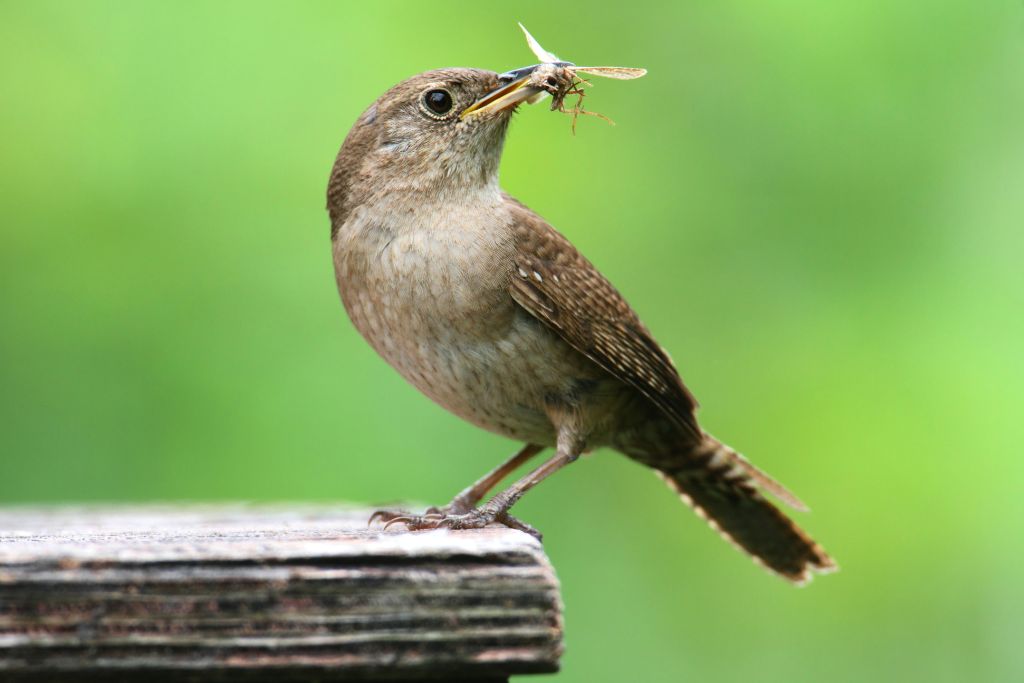
- Kingdom: Animalia
- Phylum: Chordata
- Class: Aves
- Order: Passeriformes
- Genus: Troglodytes
- Species: T. aedon
The House Wren (Troglodytes addon) is a lively little bird that has brown feathers on its back and a lighter-colored belly. Woodlands, gardens, and public parks across Michigan are typical habitats for them.
House Wrens have a reputation for having beautiful songs, which they utilize to advertise their territory and attract potential partners. They may do so in the cavities of trees, in birdhouses, or even in discarded items such as cans and old boots left outside.

Majority of a house wren’s diet is made up of various types of insects and spiders. These tiny birds are constantly on the move as they hop and flit around the branches in quest of the next food item that would satisfy their hunger. Bird watchers enjoy seeing house wrens and listening to the upbeat tunes they sing.
Mourning Dove
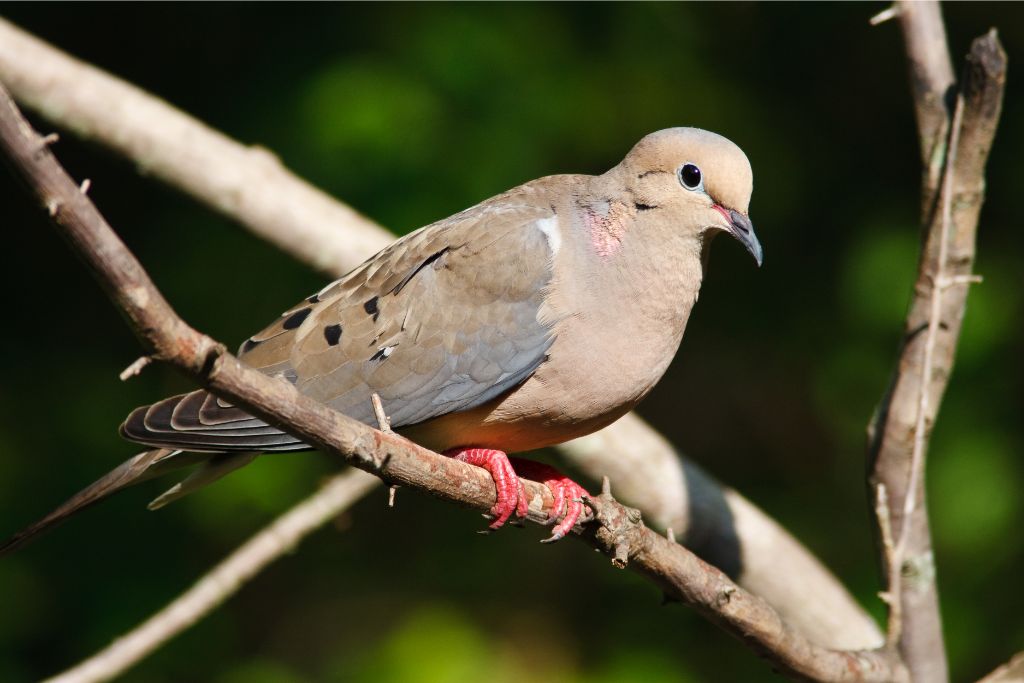
- Kingdom: Animalia
- Phylum: Chordata
- Class: Aves
- Order: Columbiformes
- Genus: Zenaida
- Species: Z. macroura
The Mourning Dove (Zenaida macroura) is a common sight in Michigan’s metropolitan areas, fields, and forests. It can also be seen in other parts of the United States. They are squishy all over and have a brownish-gray coloration. Their tails are long and tapering.
The cooing calls of mourning doves are renowned for their calming effect. Their cry is characterized by a “coo-oo, coo, coo” sound, and it is frequently linked to the presence of tranquility.
These doves typically construct their frail nests from twigs and place them in trees or on ledges. They lay two eggs, and the two parents share the incubation process. Seeds, grains, and small fruits comprise the bulk of a mourning dove’s diet.
On the ground or perched on telephone lines, where they frequently congregate in tiny flocks, you might see them if you keep your eyes open.
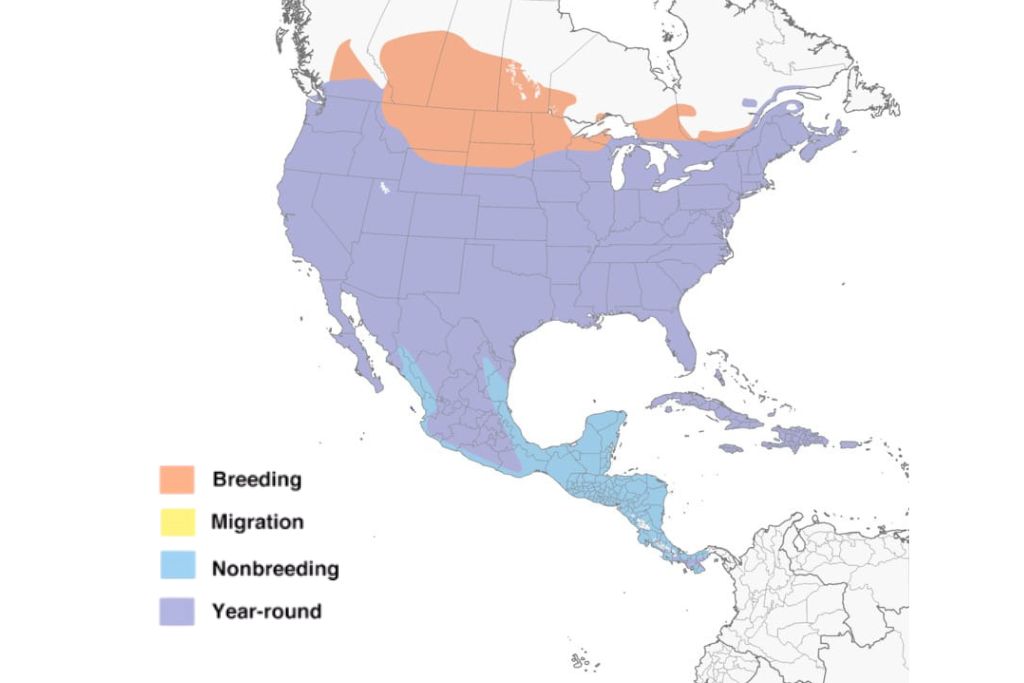
Most of the time, people say that a grieving dove is calm and peaceful. People who like birds like them because they are nice and make cute cooing sounds. Any open space can benefit from their subtle beauty and calming effects.
Rock Pigeon
- Kingdom: Animalia
- Phylum: Chordata
- Class: Aves
- Order: Columbiformes
- Genus: Columba
- Species: C. livia
The Rock Pigeon (Columba livia) is a common bird that lives in cities and towns all over Michigan. It is also called the city pigeon or street pigeon. They are medium-sized birds with plump bodies that can be gray, white, or black, among other colors.
They love to sit on buildings, rocks, and statues. Most of the time, these species build simple nests out of sticks, grass, and feathers.
Rock pigeons eat various things, like grains, nuts, and sometimes even food that people have left over. You might see them on the ground looking for food or sitting on window sills.
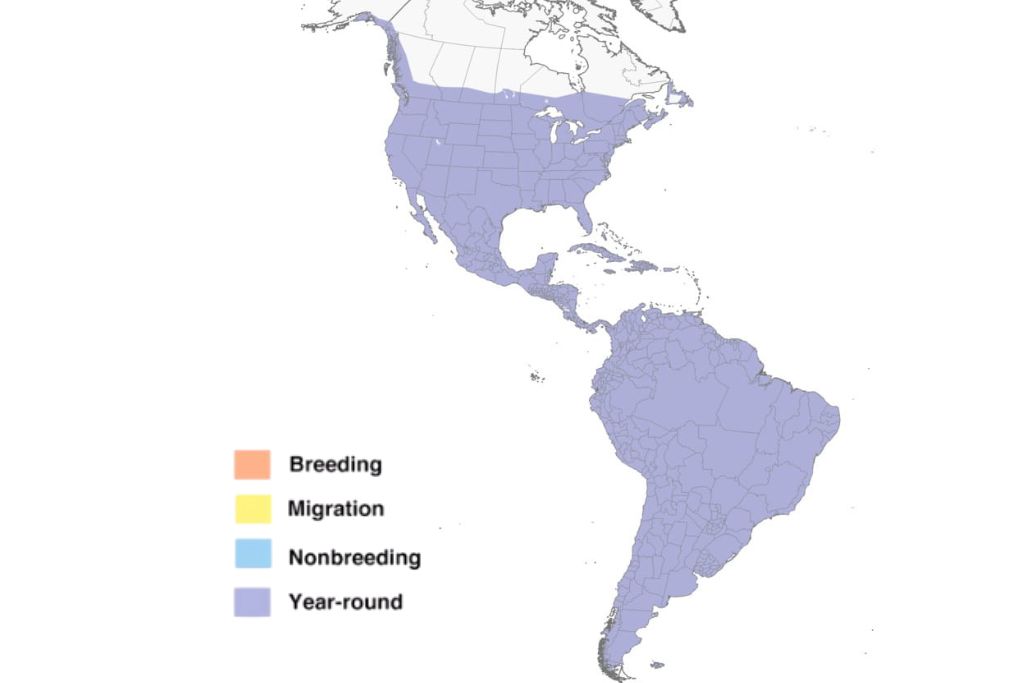
Rock pigeons are known for the singing sounds they make. They talk to each other by making soft cooing sounds and sometimes moving their wings. Some people might think of them as pests, but bird watchers can admire how well they adapt and act in cities.
Northern Cardinal
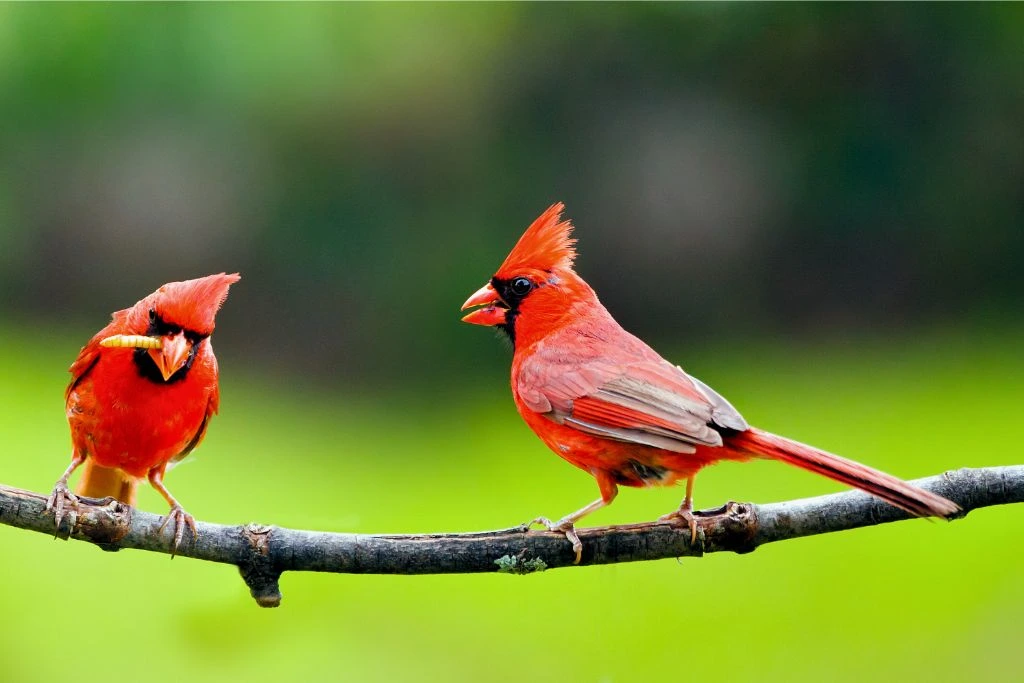
- Kingdom: Animalia
- Phylum: Chordata
- Class: Aves
- Order: Passeriformes
- Genus: Cardinalis
- Species: C. cardinalis
Medium-sized songbirds like the northern cardinal (Cardinalis cardinalis) are 8 to 9 inches long. Males have red bodies, crests, and black masks. Females are more modest than the males with red wings, crests, tails, and grayish-brown bodies.
These species often come to bird feeders, especially those with sunflower seeds, cracked corn, or suet. They are one of the most well-known birds in Michigan because of their beautiful songs and bright red feathers.
Northern cardinals thrive in Michigan’s woods, woodlands, thickets, gardens, and parks. They eat seeds, fruits, insects, and nuts. Their powerful bills split seeds and extract insects from fissures. They live in Michigan year-round because they can endure cold weather.
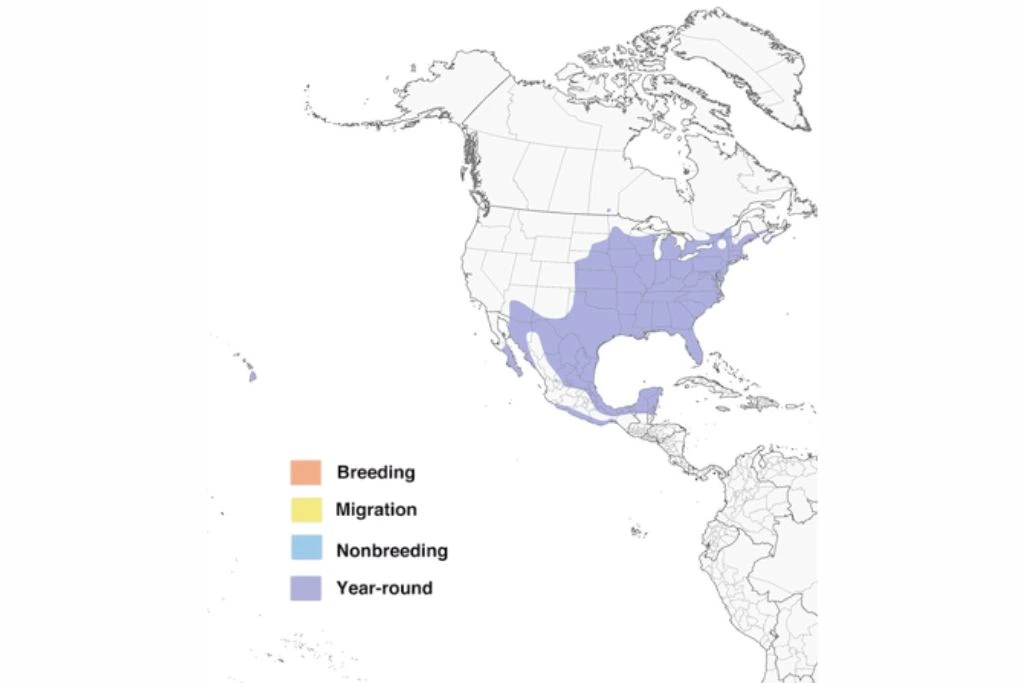
Cardinals live about 3 years in the wild, but they can live up to 15 years when they are kept as pets. They are the state bird of Ohio, Illinois, Indiana, Kentucky, North Carolina, Virginia, and West Virginia, among other states in the U.S.
Blue Jay
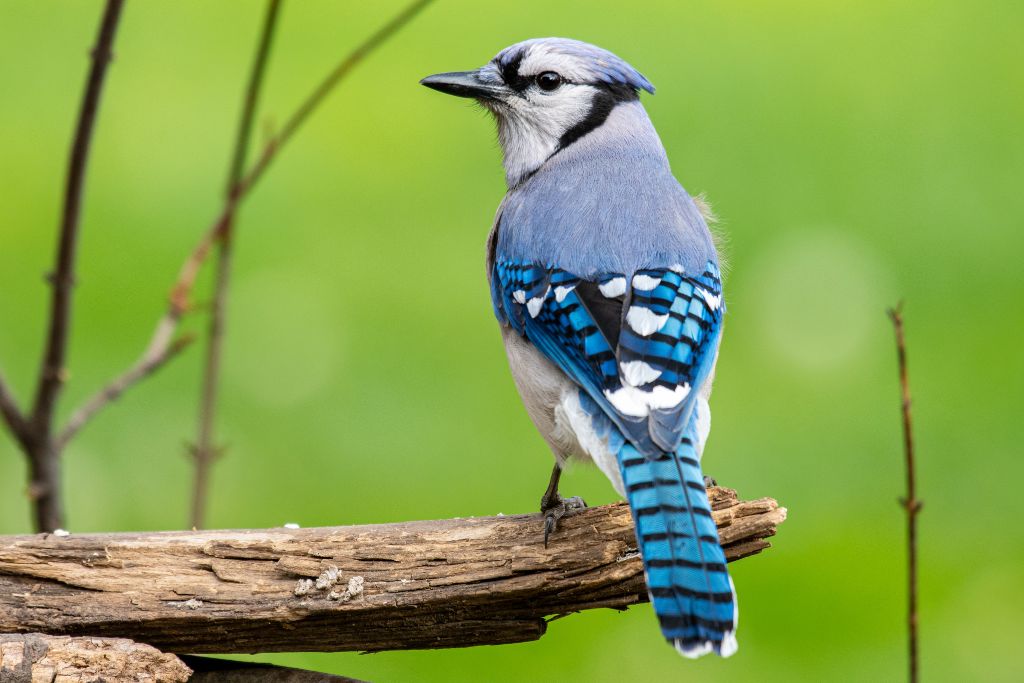
- Kingdom: Animalia
- Phylum: Chordata
- Class: Aves
- Order: Corvidae
- Genus: Cyanocitta
- Species: C. cristata
Blue Jays (Cyanocitta cristata) are often seen in Michigan’s forests, woods, parks, and neighborhoods. They are very flexible and can do well in many places, like cities and the countryside. Blue jays can often fly through the woods or sit on branches. Their loud calls and bright blue feathers make them easy to spot.
The length of the blue jay is between 9 and 12 inches. It has a blue body, a blue head with a blue cap, and a white bottom. It has blue wings and a blue tail with black bars and white spots. The blue jay is a large, strong bird with a sharp beak. They are known for their loud calls, which include squawks, screams, and noises that sound like other birds.
Blue jays are adaptable birds that live in a wide range of places in Michigan, such as woods, woodlands, parks, and suburban areas. They eat nuts, seeds, insects, fruits, and even small animals. Blue jays can also store food for later by putting it in the ground or hiding it in tree cracks.
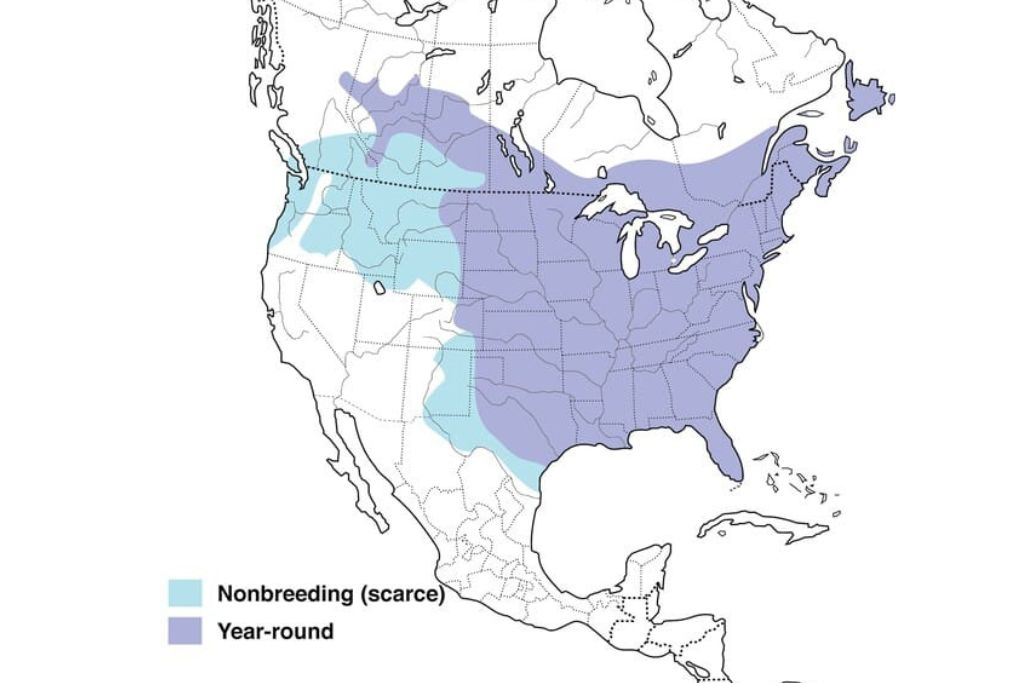
During the breeding season, blue jays form monogamous pairs. The female makes a cup-shaped nest out of sticks, grasses, and strips of bark. This nest is usually built on the fork of a tree branch. Blue jays protect their nests and fight strongly to keep other animals or people from getting near them.
Black-Capped Chickadee
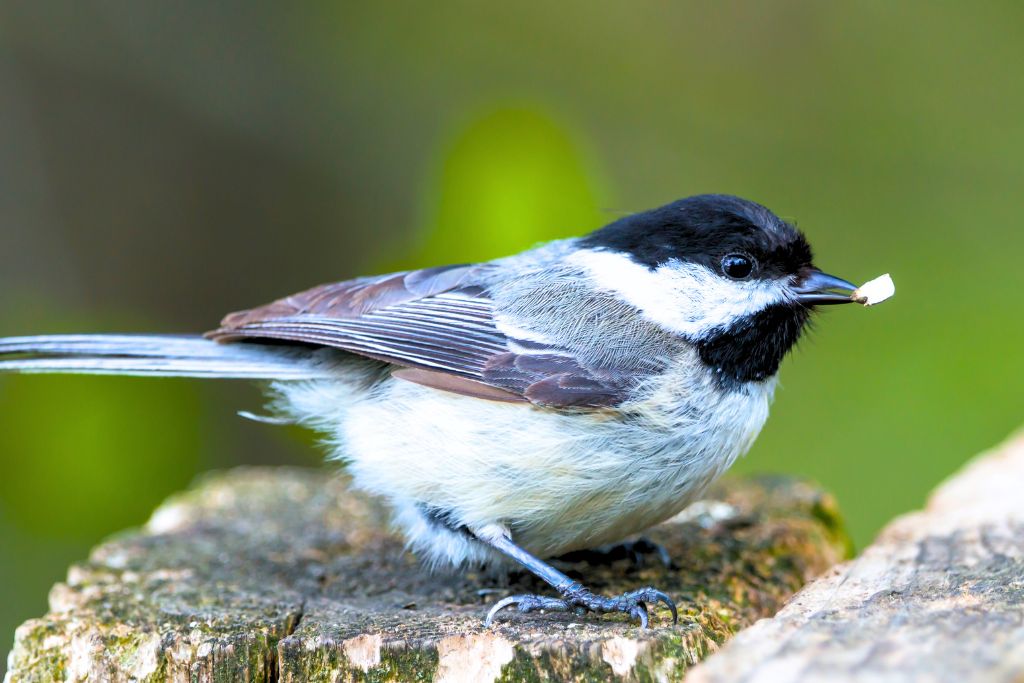
- Kingdom: Animalia
- Phylum: Chordata
- Class: Aves
- Order: Passeriformes
- Genus: Poecile
- Species: P. atricapillus
The Black-Capped Chickadee (Poecile atricapillus) is a small, round-bodied bird with a black cap on top of its head. Its head is short, and its belly is white. These cute little birds can be found in Michigan’s parks, woods, and suburbs.
They are very flexible and can be seen hopping around tree branches and feeders. Black-capped chickadees are small and have strong feet, which help them hold on to tree trunks while they look for bugs and seeds.
When it’s time to breed, the males sing a “fee-bee” song to draw a mate. About 6 to 10 years is a short time for these birds to live. Black-capped chickadees have a great memory and can remember where they hid thousands of seeds, which is interesting. People who watch birds like to see them because they are curious and nice and often get close to people.
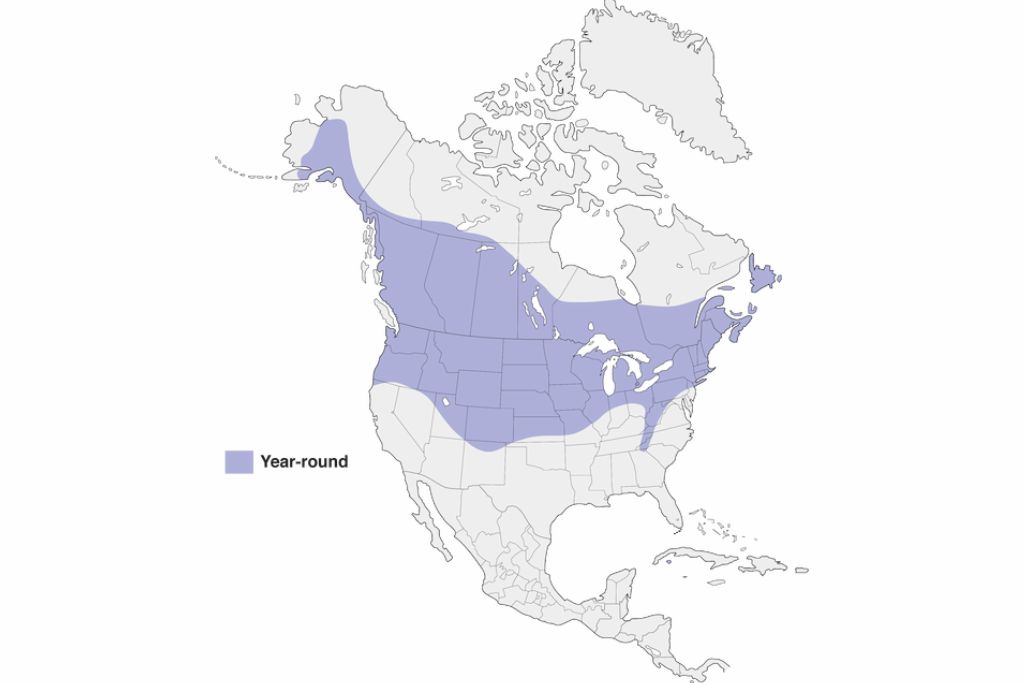
Tufted Titmouse
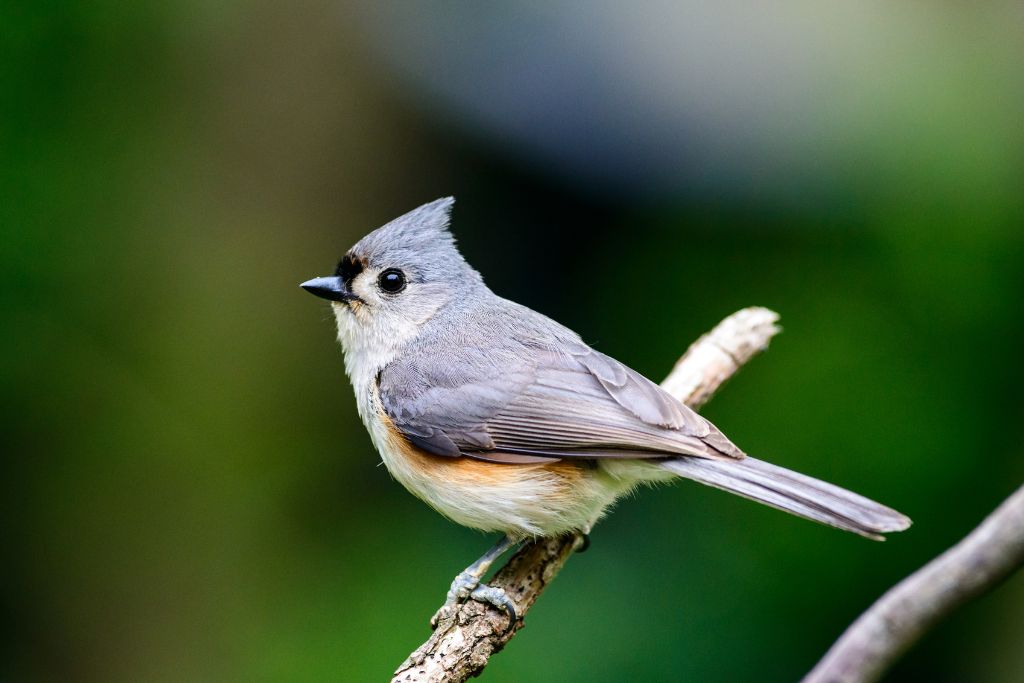
- Kingdom: Animalia
- Phylum: Chordata
- Class: Aves
- Order: Passeriformes
- Genus: Baeolophus
- Species: B. bicolor
The Tufted Titmouse (Baeolophus bicolor) is a small, gray bird with a black face and a cute little crest on its head. These birds are found in Michigan’s woods, parks, and suburbs. They are very agile and can be seen hanging upside down while looking for insects, seeds, and berries.
They use holes in trees or birdhouses to make their nests. During mating season, the male sings a “peter-peter-peter” song that is loud and clear.
The longest a tufted titmouse can live is 13 years. They are used to living in many different places and have no trouble using bird feeders in people’s yards.
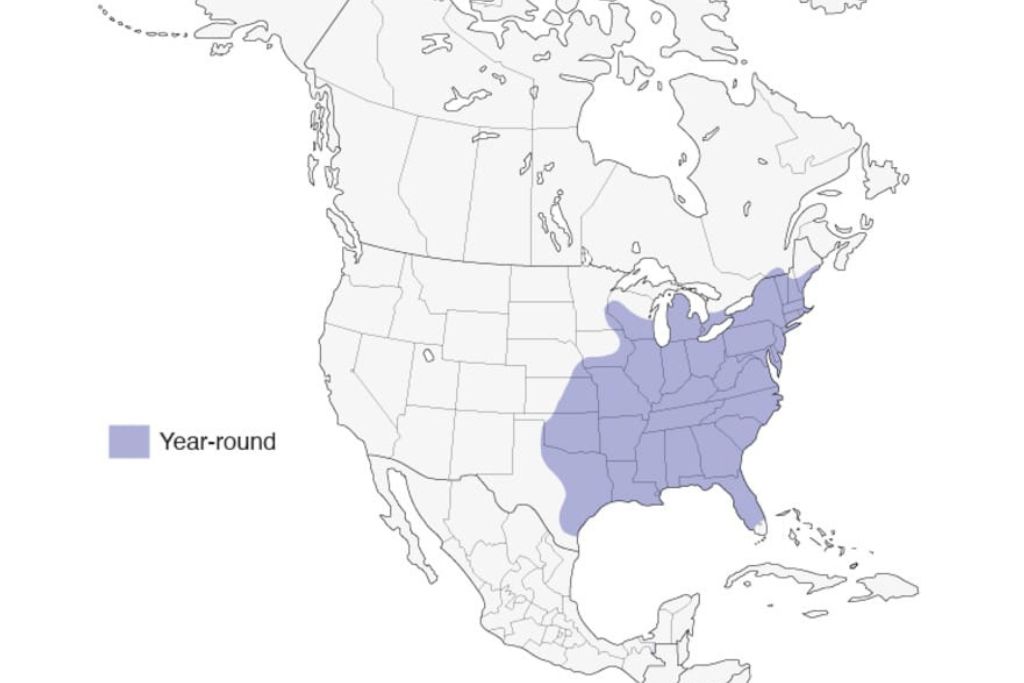
One interesting thing about them is that they often flock together with birds of different kinds to look for food and keep an eye out for danger. People who watch birds like to see them play and hear their whistling calls.
Common Grackle
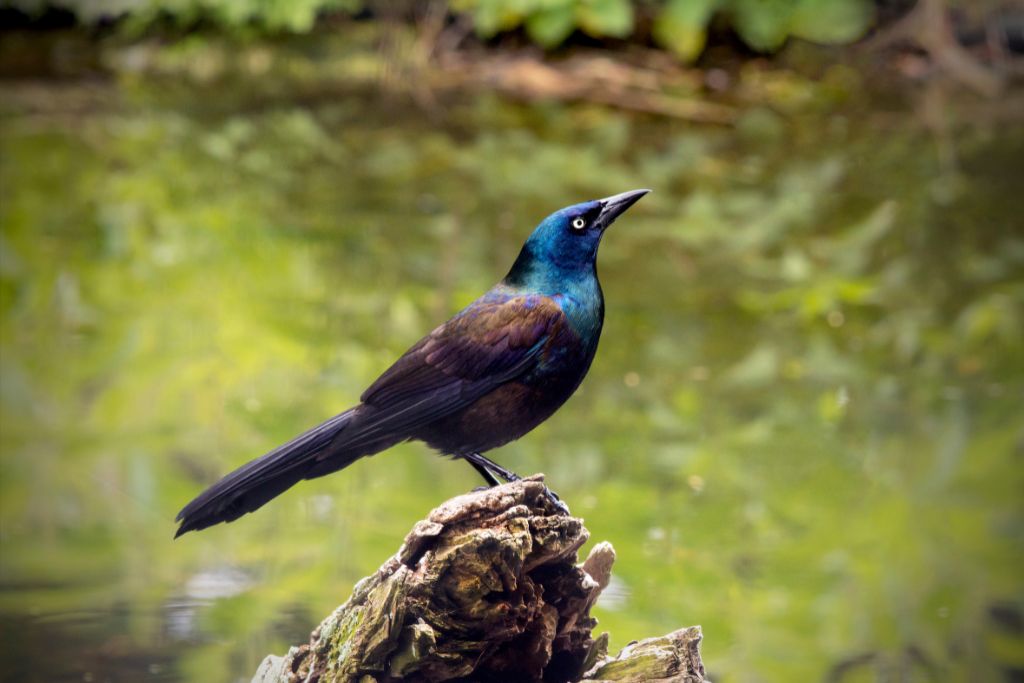
- Kingdom: Animalia
- Phylum: Chordata
- Class: Aves
- Order: Passeriformes
- Genus: Quiscalus
- Species: Q. quiscula
The Common Grackle (Quiscalus quiscula) is a bird of modest size with feathers that are glossy black and eyes that are bright yellow. They are frequently seen in open fields, meadows, marshes, and even urban areas throughout the state of Michigan.
These birds have a long, thin beak that they use to probe the ground for food, such as seeds, fruits, insects, and even small mammals. Common grackles have successfully adapted to live near people and can frequently be observed congregating in big flocks, particularly during migration.
They build their nests in the branches of trees and bushes. Males will emit a succession of loud, squeaky calls throughout the breeding season to attract potential mates. A common grackle’s lifespan ranges from 3 to 8 years on average.
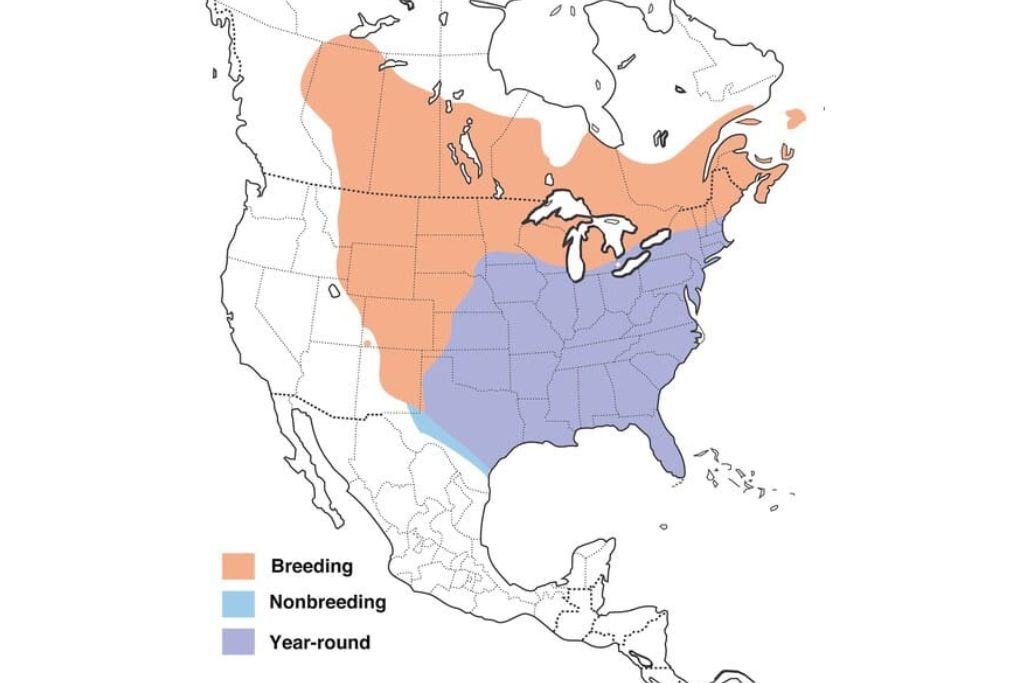
They sometimes indulge in an “anting practice,” which involves rubbing ants on their feathers. This is intriguing information about them. It is claimed that engaging in this action can aid in eliminating parasites.
Observers of birds are frequently taken in by the iridescent colors of their feathers and the active ways in which the birds forage for food.
Pileated Woodpecker
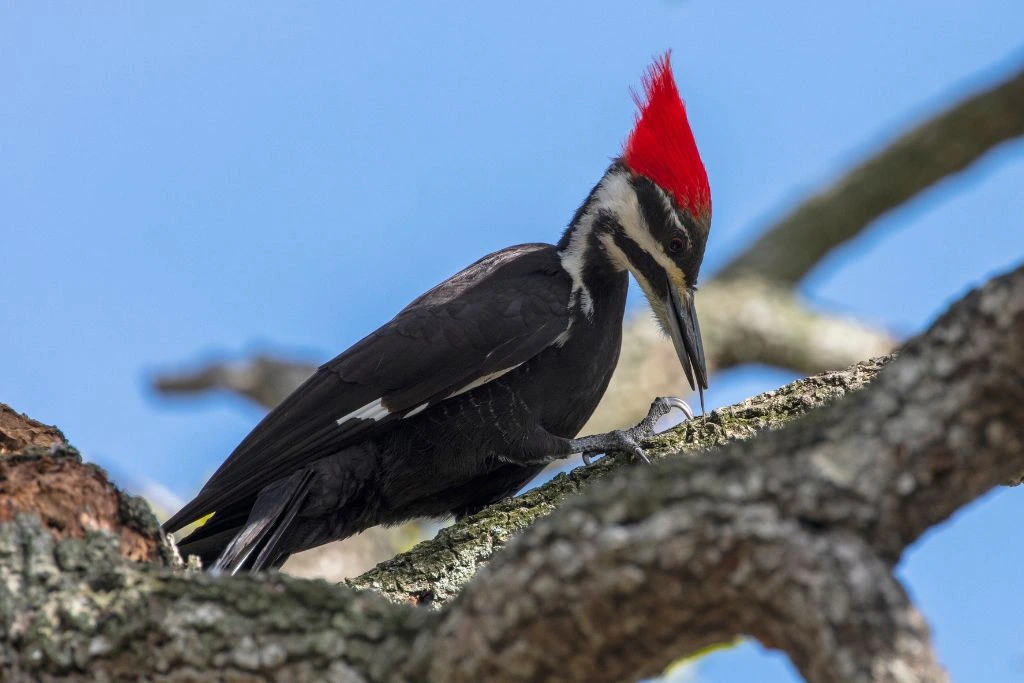
- Kingdom: Animalia
- Phylum: Chordata
- Class: Aves
- Order: Piciformes
- Genus: Dryocopus
- Species: D. pileatus
The Pileated woodpecker (Dryocopus pileatus) is a remarkable bird that sticks out due to its enormous size and remarkable appearance. Its body is black, and it has white stripes on its face, in addition to a brilliant red crest that sits atop its head. These woodpeckers are found in Michigan’s more mature forests and wooded areas.
It is common knowledge that pileated woodpeckers have powerful beaks and lengthy tongues armed with barbs. Because of these adaptations, they can retrieve insects from the trunks and branches of trees.
When searching for food or trying to communicate with other woodpeckers, they will often peck on trees, resulting in a characteristic drumming sound that can be heard throughout the forest.
Pileated woodpeckers can live up to 15 years or more, which is a long time for a bird. They make holes in trees, an important part of forest ecosystems. This is a fun story about them. These holes give other birds and animals places to hide and nest.
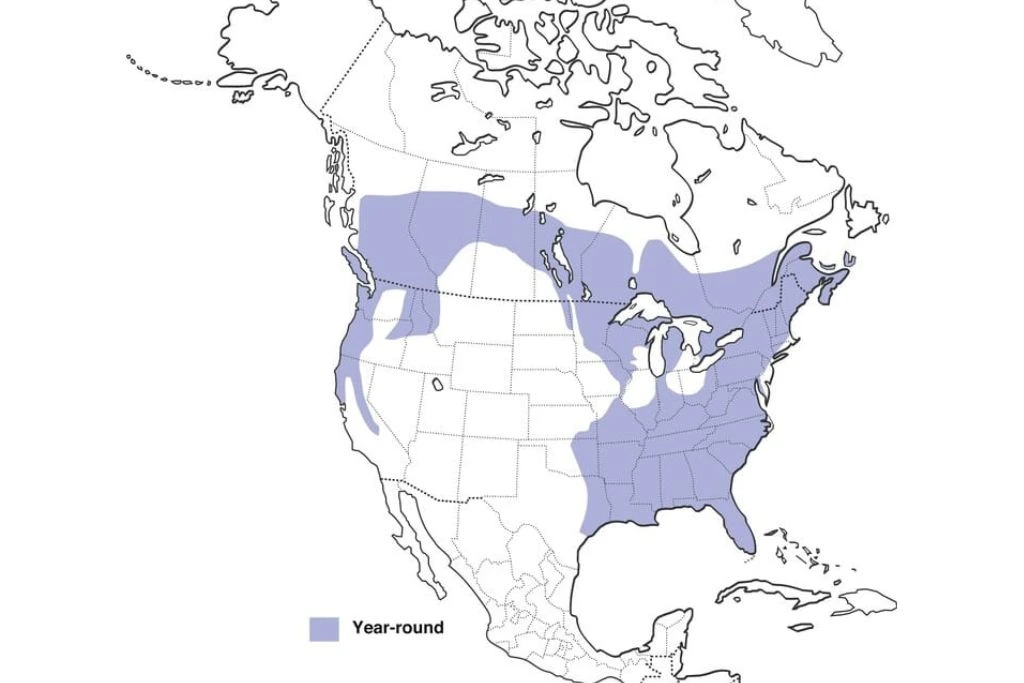
Bird fans always get excited when they see a pileated woodpecker because it is so big, has a unique look, and does interesting things. Their presence in the forest is a sign of a healthy ecosystem, and bird watchers hope to catch a glimpse of their impressive drumming shows or see them looking for insects in the trees.
Red-bellied Woodpecker
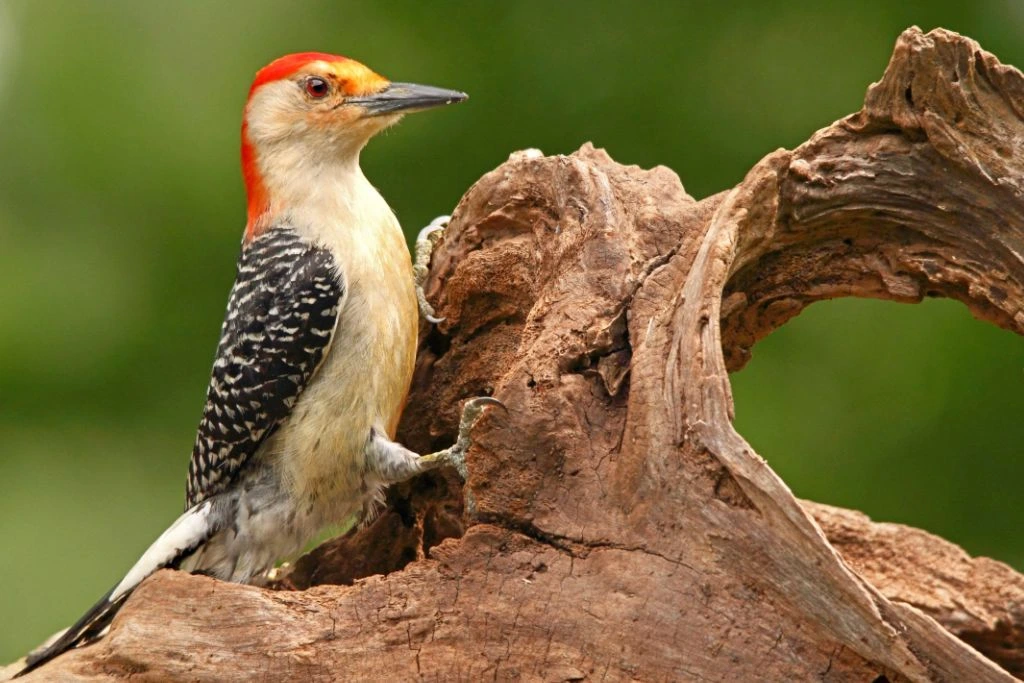
- Kingdom: Animalia
- Phylum: Chordata
- Class: Aves
- Order: Piciformes
- Genus: Melanerpes
- Species: M. carolinus
Red-bellied woodpecker (Melanerpes carolinus) is about 9 to 10 inches long and has a red patch on its belly. Its back has a clear black-and-white pattern, and its head is topped with a red cap. Its belly is a pale gray color.
Even though it is called a “red belly,” it is often hard to see. On the back of their heads, males have a bright red patch, while females have a smaller red patch or none at all. They have strong bills resembling chisels and stiff tail feathers that help them climb and drum.
In Michigan, woodpeckers live in many types of wooded places, such as forests, woodlots, suburban areas, and parks. They have features that help them climb and eat tree bark.
Woodpeckers make holes for their nests in dead or dying trees. Sometimes they use holes that are already there or man-made structures. Both men and women are involved in digging. The female lays 3 to 7 white eggs, which are cared for by both parents.
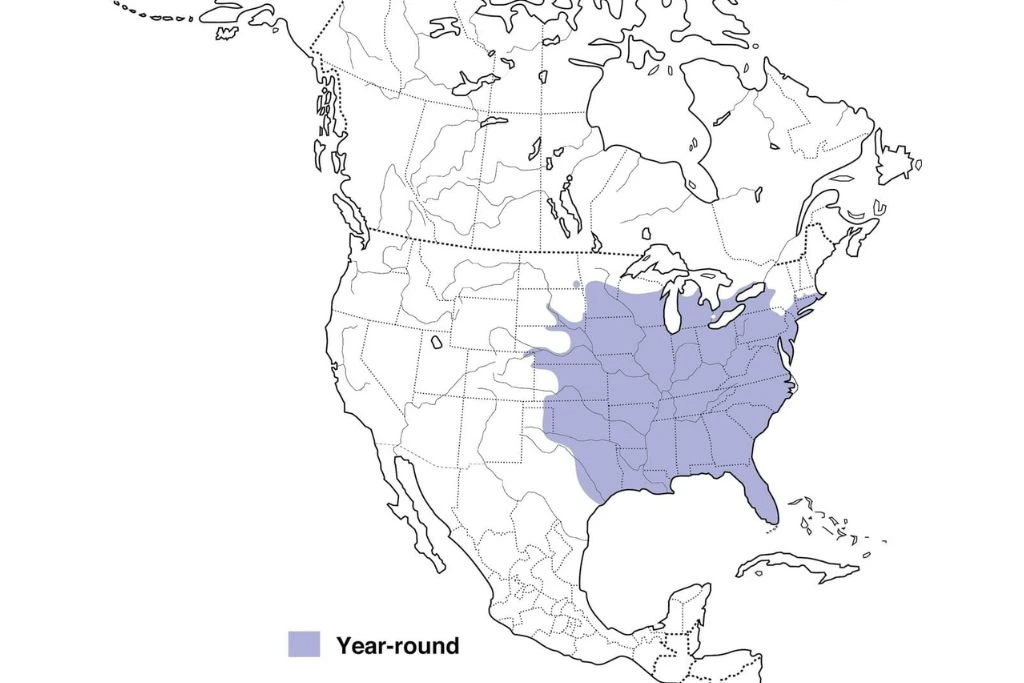
Red-bellied woodpeckers are often seen in Michigan’s wooded areas, forests, and suburban places. People often see them climbing tree trunks or foraging on branches, using their sharp bills to look for insects and sap. They like places with lots of old trees, dead trees, and food.
Eastern Bluebird
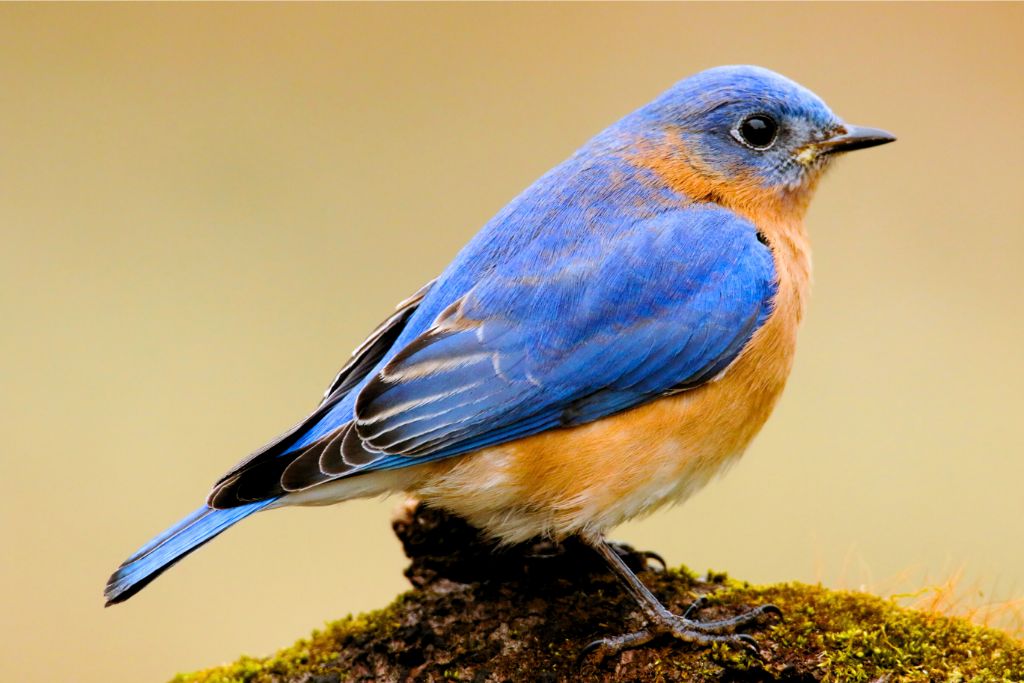
- Kingdom: Animalia
- Phylum: Chordata
- Class: Aves
- Order: Passeriformes
- Genus: Sialia
- Species: S. sialis
The Eastern Bluebird (Sialia Cialis) is one of the smaller birds in Michigan. Its body measurements are between 6 and 7 inches long. It has a round head and a short, straight bill. Its body is round and fat. The male has bright blue feathers on its back, head, and wings. Its breast is orange or rusty red, and its underside is white.
Eastern bluebirds live mostly in open fields, meadows, orchards, and suburbs in Michigan. They have learned to use nest boxes, which give them a place to nest in places without natural holes.
Bluebirds eat mostly insects, like beetles, grasshoppers, and caterpillars, which they catch by sitting on trees and swooping down to the ground. Sometimes, they also eat berries and sweets, especially when insects are scarce in the winter.
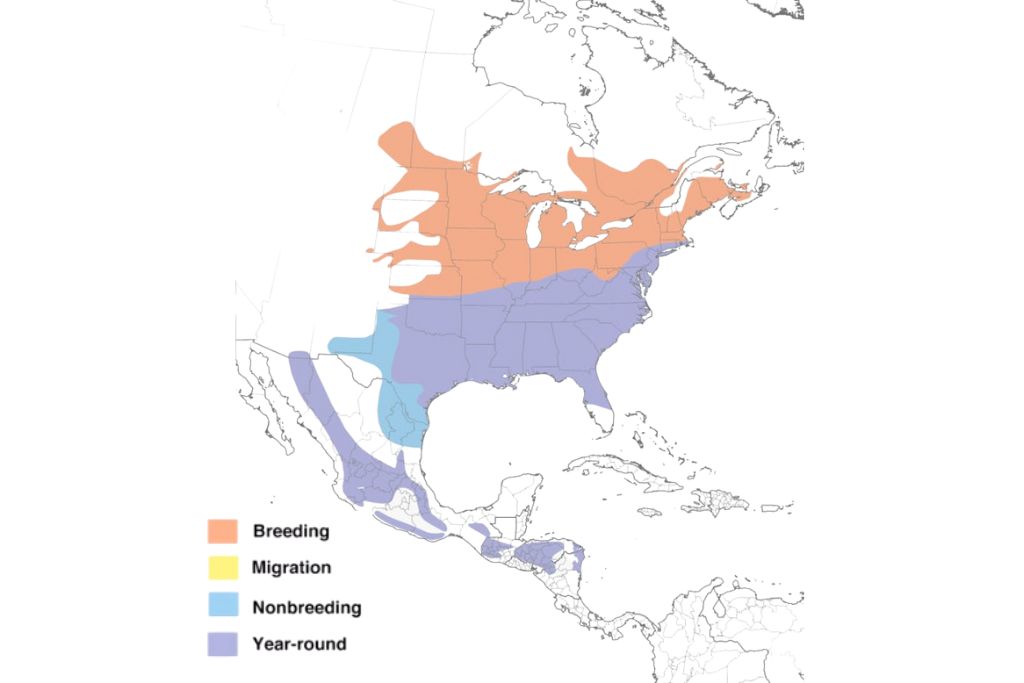
They like places with a lot of trees and places to sit where they can look for insects. Bluebirds can often be seen sitting on fence posts, power lines, or tree branches and looking for food on the ground. Putting nest boxes in the right places can bring in eastern bluebirds and help keep their numbers up.
Ruby-Throated Hummingbirds
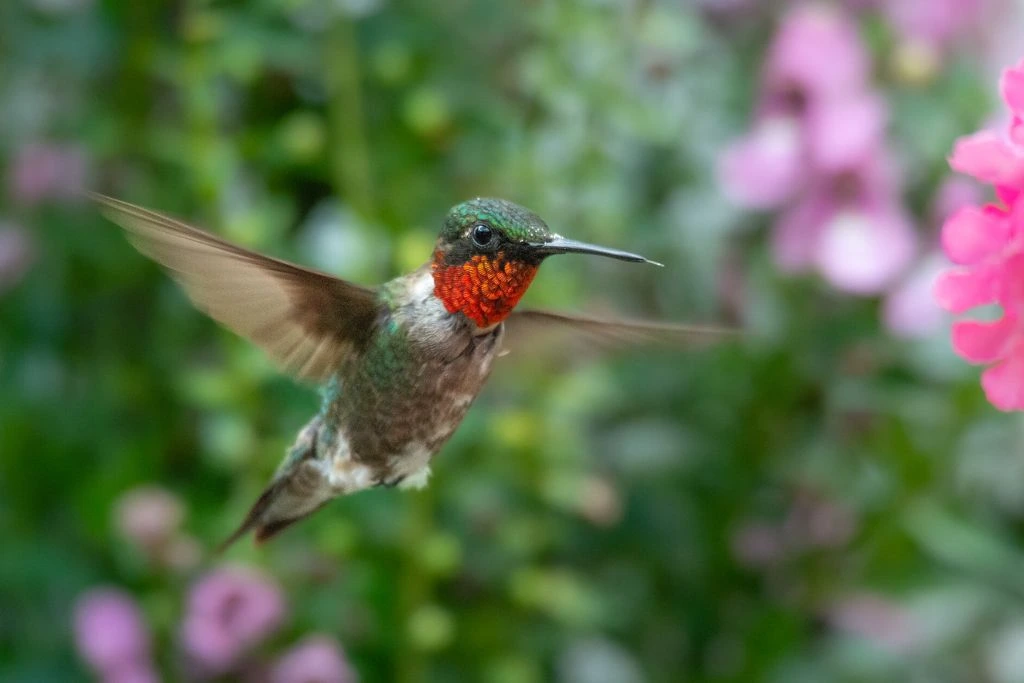
- Kingdom: Animalia
- Phylum: Chordata
- Class: Aves
- Order: Apodiformes
- Genus: Archilochus
- Species: A. colubris
Ruby-throated hummingbirds (Archilochus colubris) are migrating birds found in Michigan during the summer months. They come to the state in late April or early May and leave in September. Most small birds in Michigan, including ruby-throated, are drawn to places with lots of nectar sources, like parks, meadows, and the edges of woods.
Planting native flowering plants, especially ones with tubular-shaped flowers, can help bring in these beautiful birds. Many bird watchers also hang hummingbird feeders filled with a mix of four parts water and one part white granulated sugar.
This hummingbird species is an example of a small bird that is around 3 to 4 inches long. It has a thin body, long wings, and a long, thin bill that helps it eat nectar. Males have bright green feathers on their back and head, and a ruby-red patch on their throat shines in the sun.
Ruby-throated Hummingbird’s incredible agility in the air has made it a popular bird. They need a high-volume diet of nectar and insects due to their exceptionally rapid metabolism.
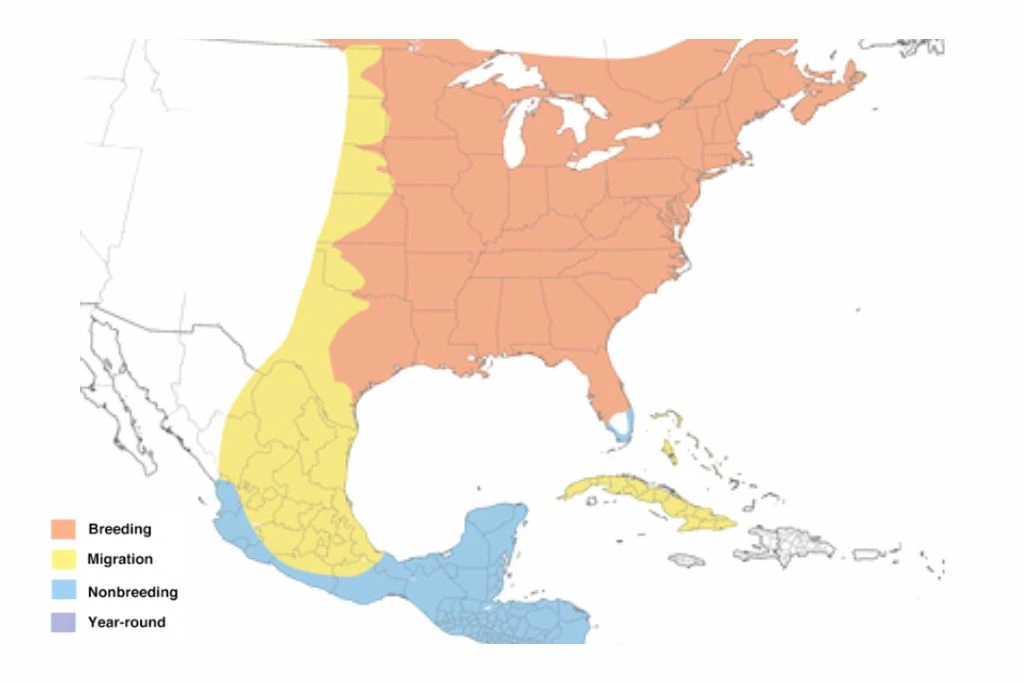
In order to feed while in flight, hummingbirds can hover in front of flowers and beat their wings up to 80 times per second. They are the only hummingbird species regularly reproducing in the Eastern United States.
Baltimore Oriole
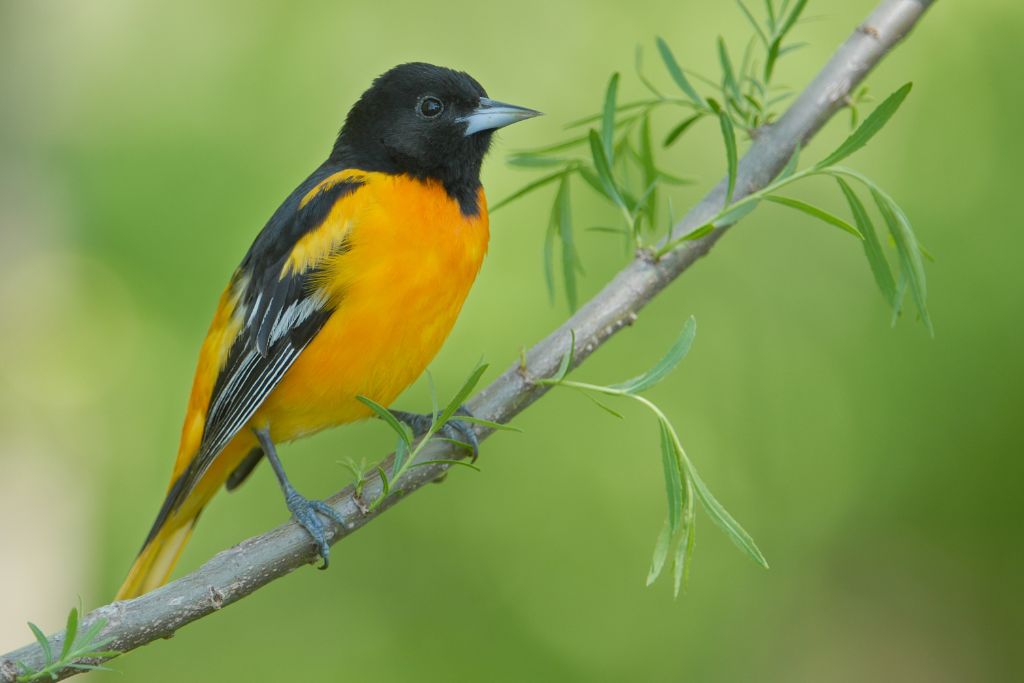
- Kingdom: Animalia
- Phylum: Chordata
- Class: Aves
- Order: Passeriformes
- Genus: Icterus
- Species: I. galbula
The Baltimore Oriole (Icterus galbula) is a songbird about 7 to 8 inches long. The male has bright orange feathers on its head, neck, and underside. Its wings and tail are black. The female is a bit less bright. Her feathers are a mix of orange and grayish-brown. The strong legs and pointed bills of orioles help them eat and rest.
Did you know that orioles also eat in a different way than other birds? The word for this is “gaping.” They use their mouths to break open the bark of trees and look for insects inside.
Migratory Orioles spend the winter in South America and return to North America for breeding.
They sing in lush, flute-like sounds. Orioles eat nectar and spread pollen when they visit flowers. They can be lured to gardens with orange slices, grape jelly, and sugar water feeders.
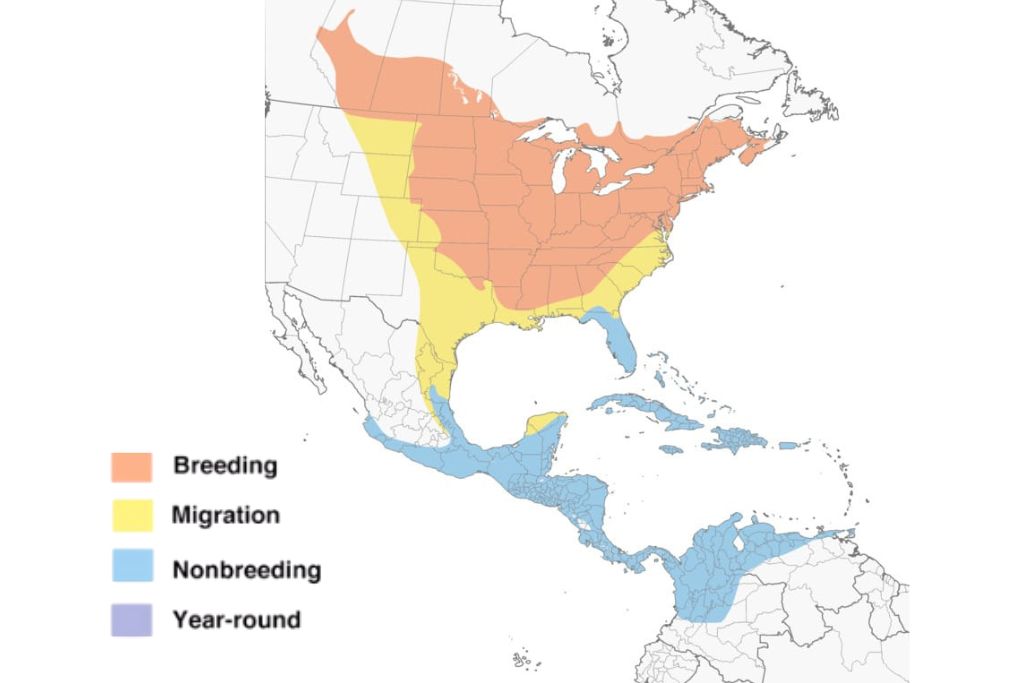
Tall trees with nectar-producing blooms, like trumpet vines, apple trees, and cherry trees, attract them. Setting up bird feeders or planting nectar-producing native flowers will help you spot these brilliant orange birds on your property.
Chipping Sparrow
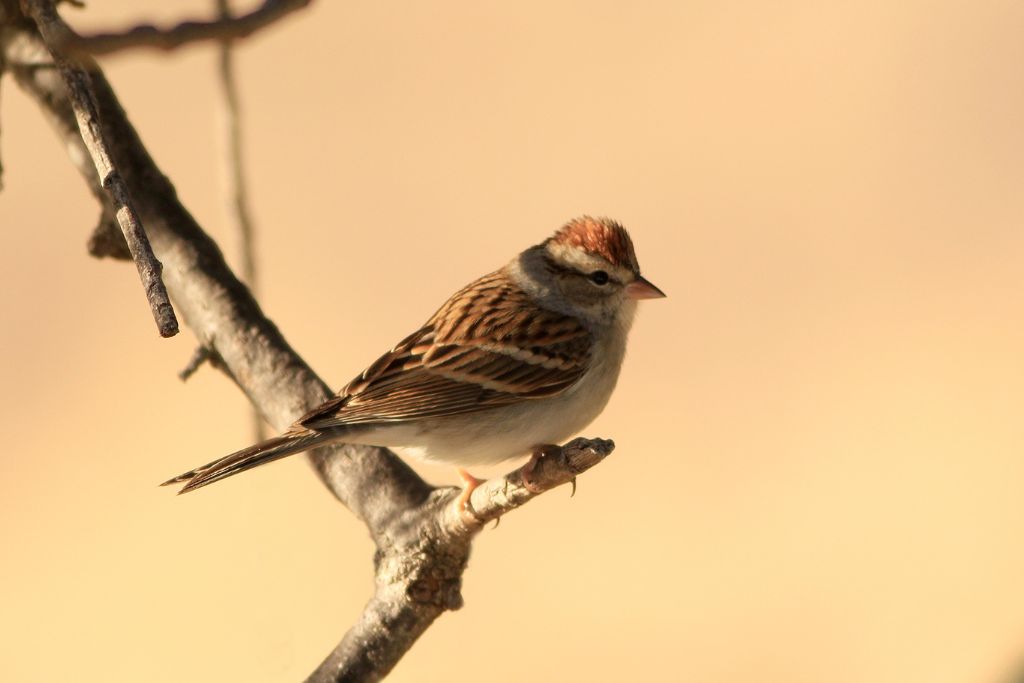
- Kingdom: Animalia
- Phylum: Chordata
- Class: Aves
- Order: Passeriformes
- Genus: Spizella
- Species: S. Passerina
The Chipping sparrow (Spizella passerina) is a small bird that can sing. It is between 5 and 6 inches long. It has a thin body, a thin beak, and a long tail with a notch in it. Chipping sparrows have mostly grayish-brown feathers on their upper parts and pale gray feathers on their underparts. Their bills are shaped like cones, which makes them good for cracking open and eating seeds.
Chipping sparrows also eat small insects and spiders, which are good sources of energy for their young during the breeding season.
During the breeding season, chipping sparrows can have more than one brood, especially in places with a lot of food. They are birds that travel a lot. In the winter, they spend their time in the Southern United States, Mexico, and Central America.
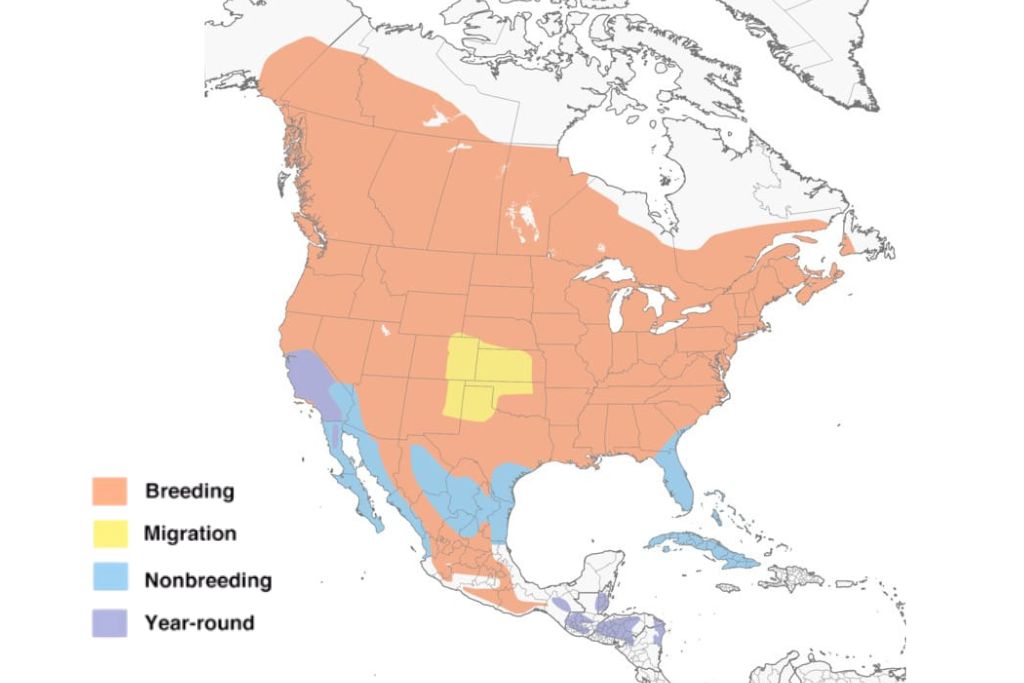
In Michigan, chipping sparrows live in woodlands, fields, meadows, and suburban areas with shrubs and trees in Michigan. They sit on low branches or bounce about for food. Planting native plants and providing bushes for nesting and foraging will attract these beautiful sparrows.
Dark-Eyed Junco
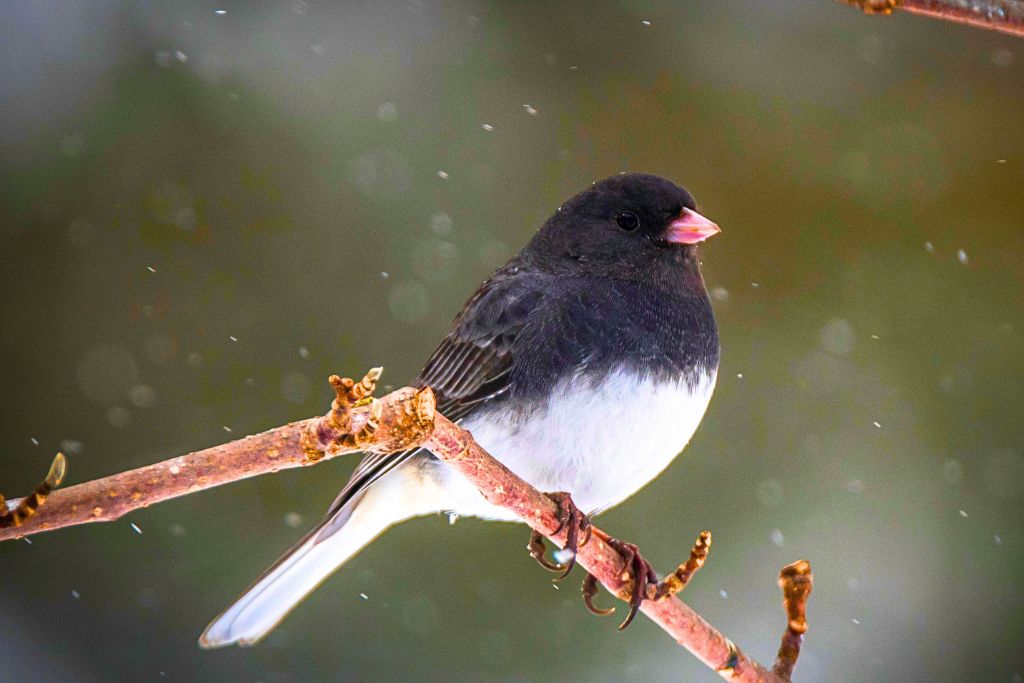
- Kingdom: Animalia
- Phylum: Chordata
- Class: Aves
- Order: Passeriformes
- Genus: Junco
- Species: J. hyemalis
The Dark-eyed junco (Junco hyemalis) is a tiny, chubby bird that overwinters in Michigan. The outer tail feathers of these birds are white, while the rest of their bodies are a distinctive grayish brown. Different subspecies of the dark-eyed junco can be identified by their distinct coloring and feeding habits on the ground.
Dark-eyed juncos are common winter visitors to wooded areas, parks, and even suburban backyards. They swarm together to scratch the ground in search of grains and small insects. They forage the forest floor for seeds, grains, and berries, the bulk of their diet.
These species in Michigan’s backyard evolved well to colder areas and can survive long periods of snow and ice. They can puff up their feathers to keep the warmth close to their body, and their plumage acts as insulation. Their short, strong beak is perfect for gnawing through hulls of seeds.
The arrival of spring means the annual migration of dark-eyed juncos to northern nesting areas in places like Canada. They construct shallow, cup-shaped nests on or near the ground, often concealing them in thick undergrowth. While the male aids in food collection, the female lays a clutch of eggs and tends to them throughout incubation.
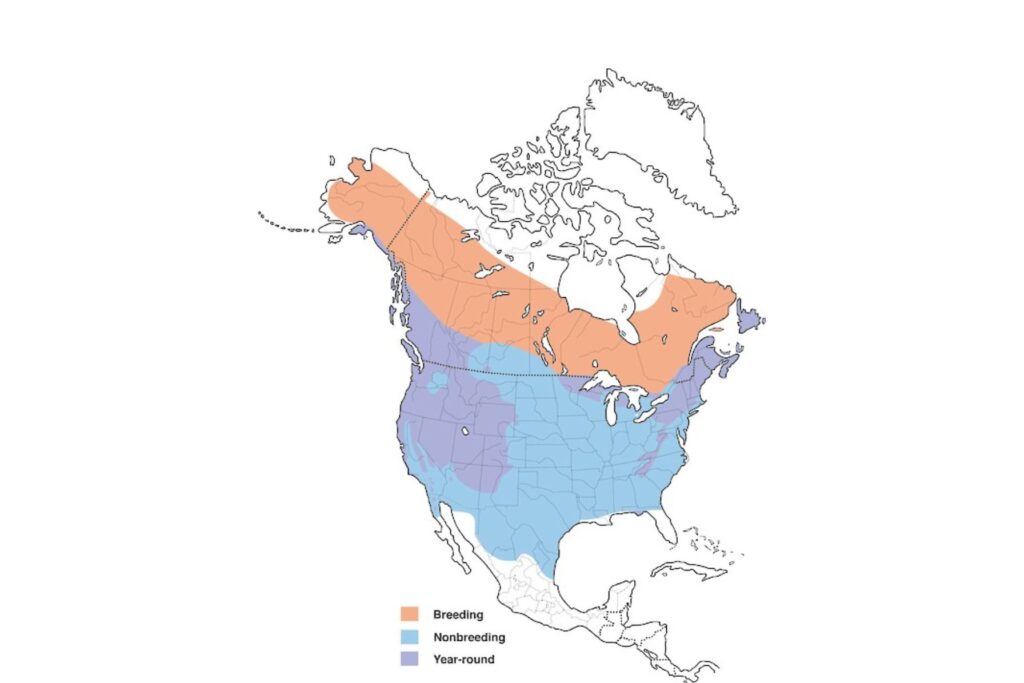
Dark-eyed juncos are a favorite among bird watchers, especially during the winter when there are so many of them to see. They are a sight to behold, with their colorful plumage and active foraging. Look out for the ground-dwelling birds as they hop and scratch over the snowy environment in search of food.
Pine Siskin
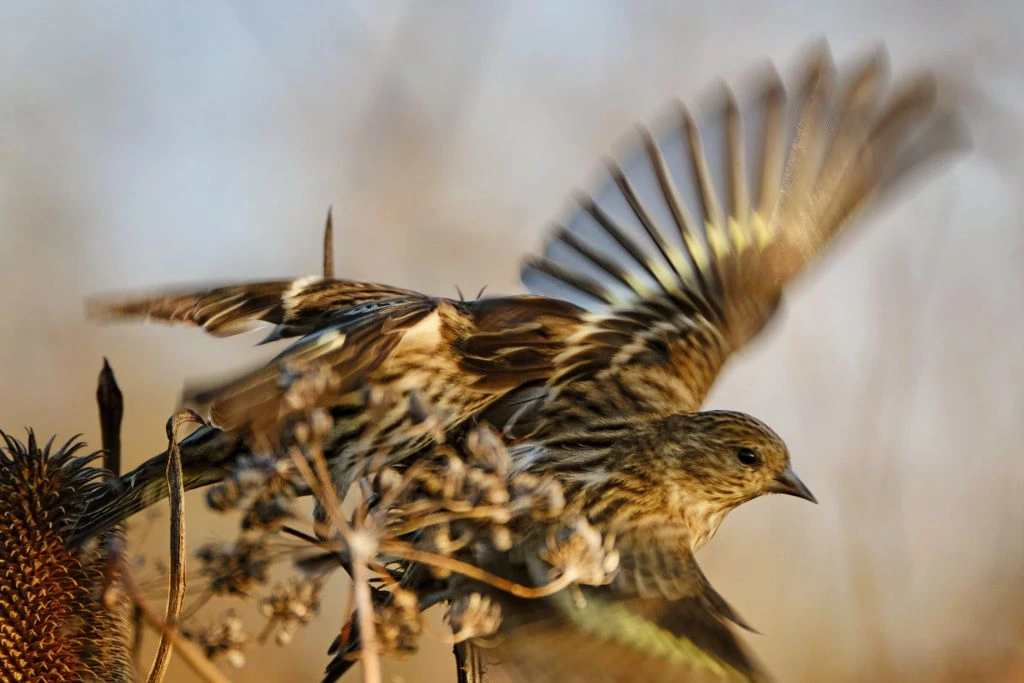
- Kingdom: Animalia
- Phylum: Chordata
- Class: Aves
- Order: Passeriformes
- Genus: Spinus
- Species: S. pinus
The Pine Siskin (Spinus pinus) is a small finch with a spotted brown body, wings, and tail with small amounts of yellow. These birds are known for their acrobatic flight patterns and their love for pine forests and woodlands.
This species of small birds of Michigan have a special beak that lets them get seeds out of pine cones and other evergreen trees. They move from one place to another to find food and prefer to travel in large groups. Small bugs and seeds from other trees are also part of their food.
During the breeding season, pine siskins build cup-shaped nests out of sticks, grass, and plant fibers, usually in coniferous trees. The female lays an egg clutch, and both parents take turns caring for the babies. When the chicks hatch, they mostly eat the seeds their parents have already eaten.
Pine siskins have irruptive migration, meaning their movement and number can change a lot yearly depending on how much food there is. Some years, there may be a lot of pine siskins in Michigan, and other years, there may be few.
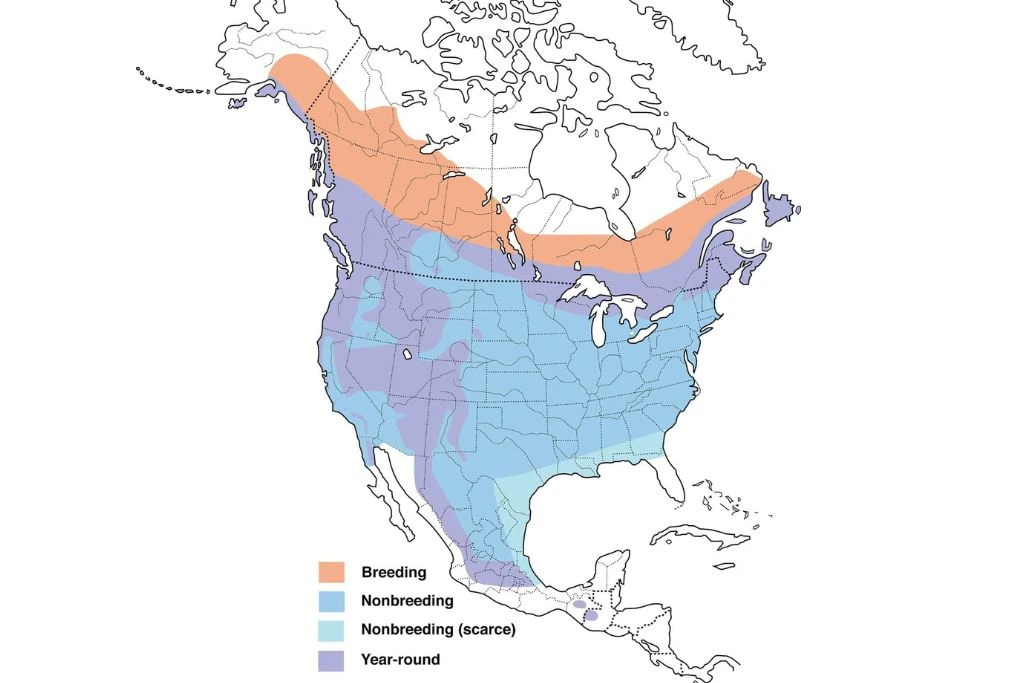
When Pine Siskins move into a new area, people who like to watch birds are excited. They are fascinating to watch because of how quickly they fly, how their beaks have changed, and how their talking calls sound. Watch for these small finches moving through the trees, looking for food.
Rose-Breasted Grosbeak
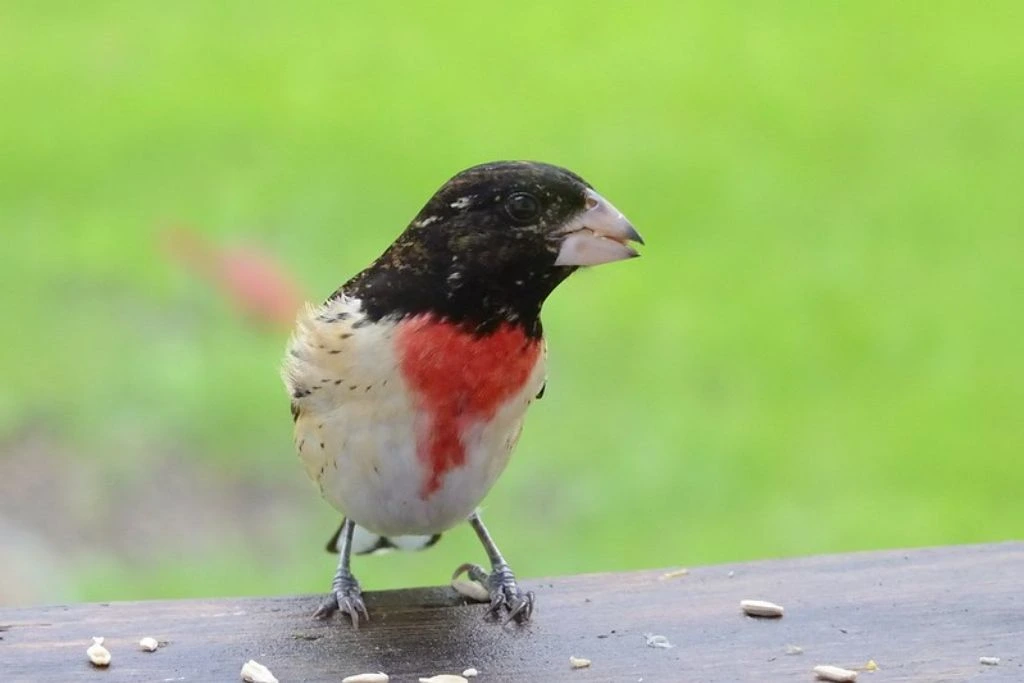
- Kingdom: Animalia
- Phylum: Chordata
- Class: Aves
- Order: Passeriformes
- Genus: Pheucticus
- Species: P. ludovicianus
Rose-breasted grosbeaks (Pheucticus ludovicianus) sing a beautiful song made up of rich notes that sound like a flute. They mostly eat insects and spiders, but sometimes they eat fruits and nuts. Their beaks are made to break open seeds and pull insects out of the bark of trees.
During the breeding season, the male Rose-breasted Grosbeak sets up an area and protects it with its unique song. The female makes a cup-shaped nest in a bush or small tree, where she lays a clutch of pale blue or greenish-blue eggs. Both parents help take care of the chicks until they can fly away.
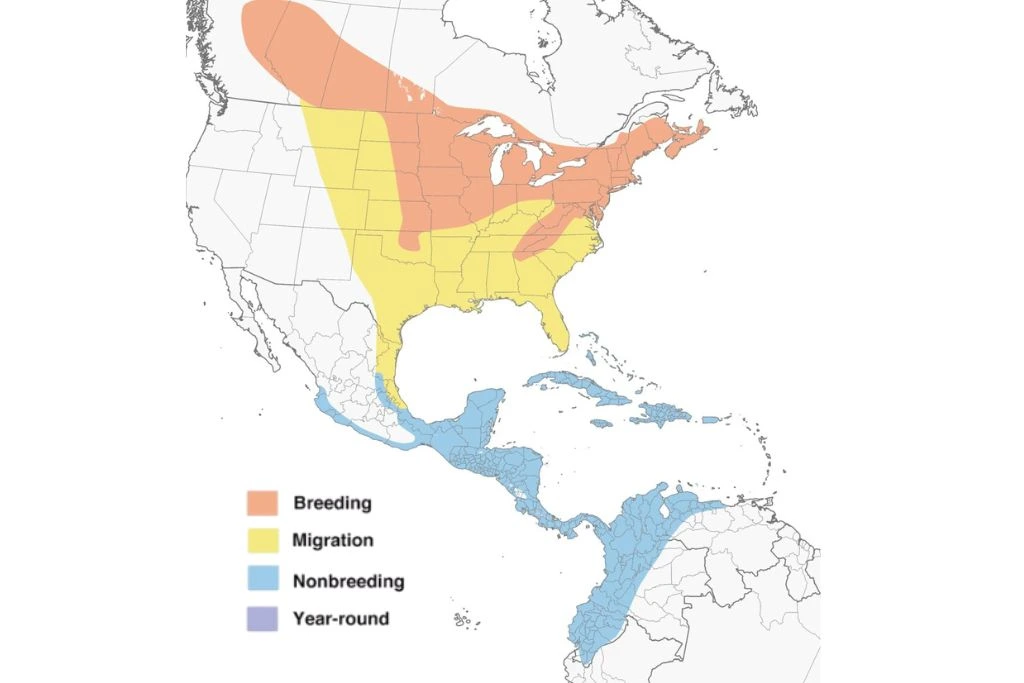
Rose-breasted grosbeaks are birds that people in Michigan look forward to seeing in the spring and summer. Nature lovers love them because of how beautiful they look, how beautiful their songs are, and how hard they work to find food. Watch for these small birds as they sit on branches or visit backyard feeders. They add color and music to Michigan’s natural settings.
White-Crowned Sparrow
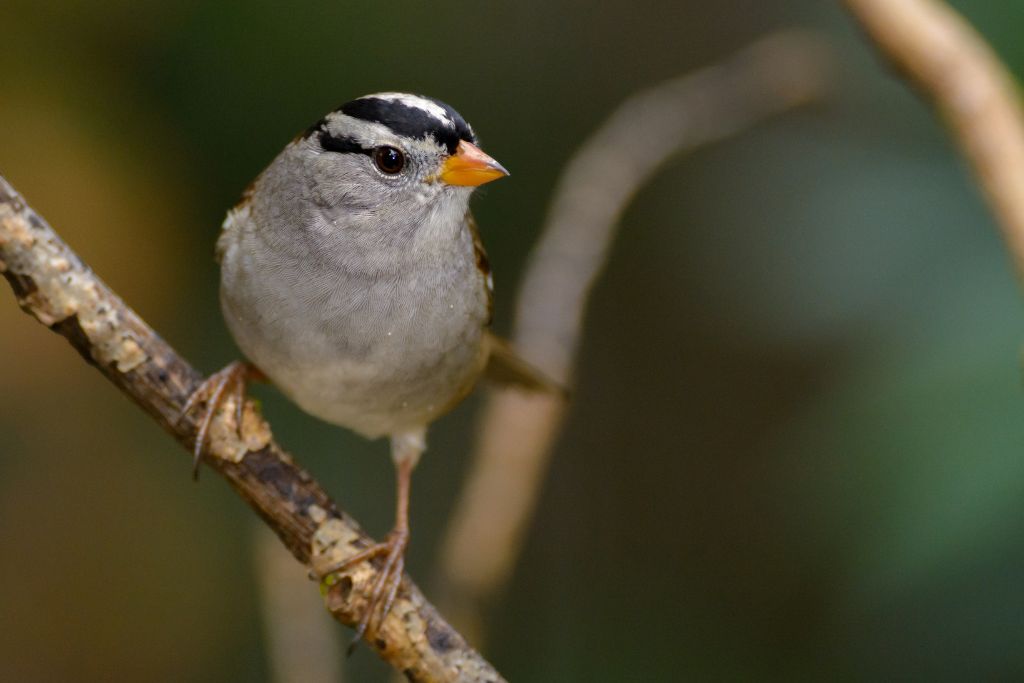
- Kingdom: Animalia
- Phylum: Chordata
- Class: Aves
- Order: Passeriformes
- Genus: Zonotrichia
- Species: Z. leucophrys
Listen to their sweet songs when you see these tiny sparrows feeding on the ground or sitting in trees in Michigan.
White-crowned sparrow (Zonotrichia leucophrys) is a small bird that moves around a lot. It can be seen in Michigan in the spring and fall. Their head is striped with white and black, and the rest of their feathers are a grayish-brown color. You can find these sparrows in places like shrubs, thickets, and the edges of woods.
The whistled sounds of the white-crowned sparrow’s song are clear and beautiful. Most of what they eat are seeds, bugs, and nuts. When they are nesting, they eat a lot of insects, but when they are moving, they eat a lot of fruits.
During the breeding season, white-crowned sparrows go to the north of North America. The female builds a cup-shaped nest on the ground or in low vegetation. This nest is usually hidden among grasses or trees. After she lays her eggs, both parents help take care of the young.
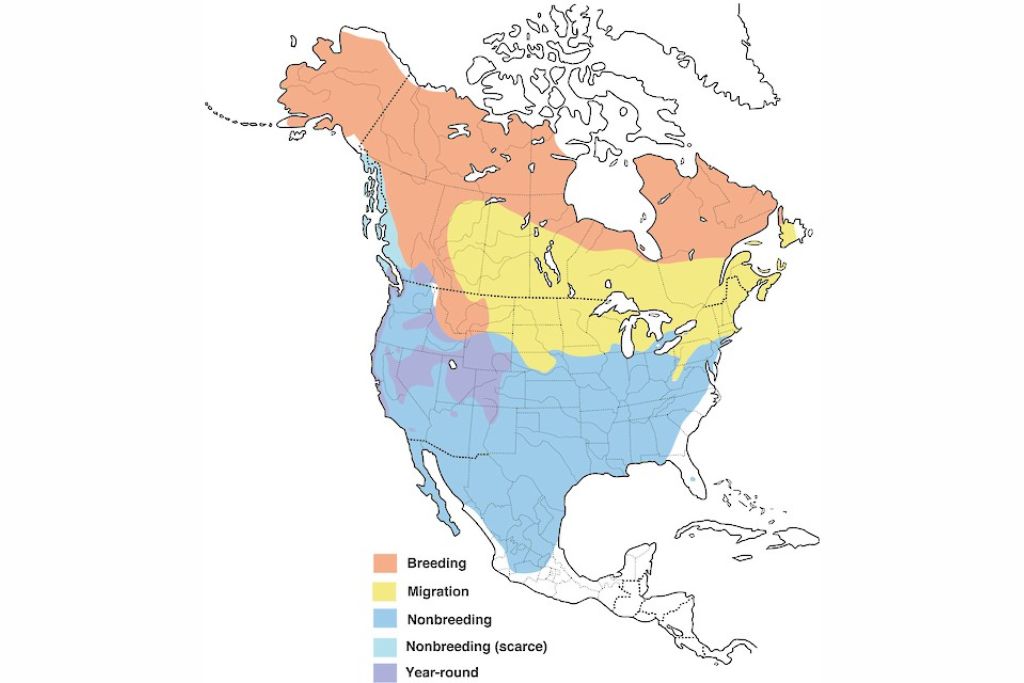
During the state’s spring and fall migrations, people who like to watch birds often see white-crowned sparrows. Their beautiful songs and unique crown marks make them fun to watch and listen to.
White-Throated Sparrow
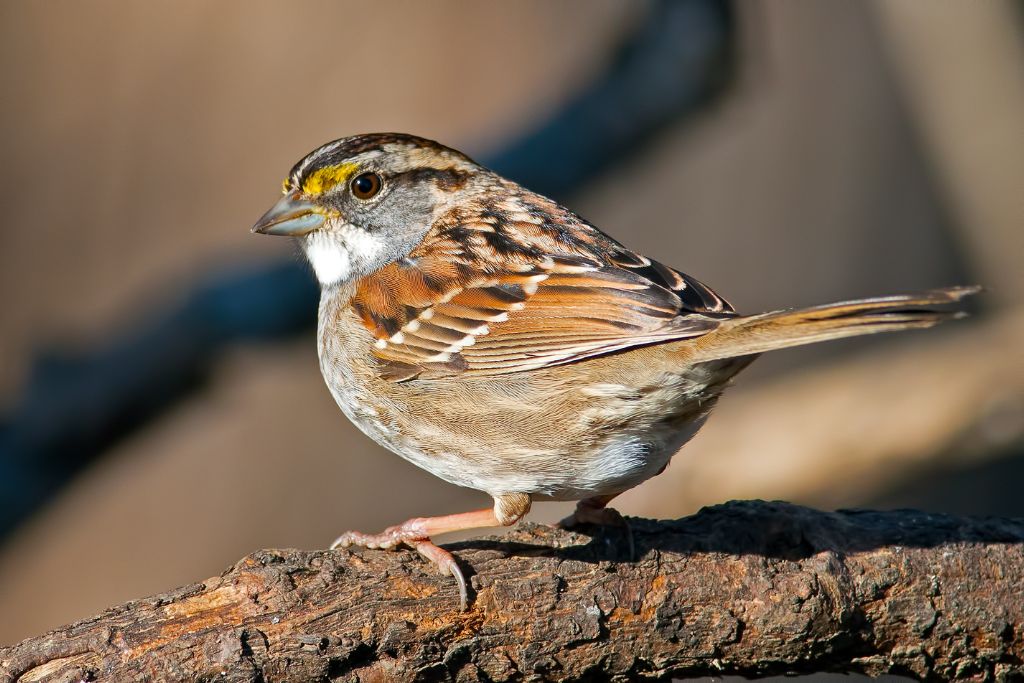
- Kingdom: Animalia
- Phylum: Chordata
- Class: Aves
- Order: Passeriformes
- Genus: Zonotrichia
- Species: Z. albicollis
There are many kinds of small birds in Michigan, including the white-throated sparrow (Zonotrichia albicollis), which can be seen when it migrates in the spring and fall. Their backs are brownish, their breasts are gray, and they have a white patch on their neck outlined in black.
You might find these sparrows in forests, woods, and shrublands. These species sing a song that is very pleasant to the ears and has clear whistled sounds. Most of the time, they eat seeds, but they will also eat berries and animals. Scratching the ground is a common way for these animals to find food.
During the spring and summer, white-throated sparrows head north to nest. The female will build a cup-shaped nest on the ground or close to it and generally hide it among plants. After the eggs are laid, the mother and father care for the eggs and young.
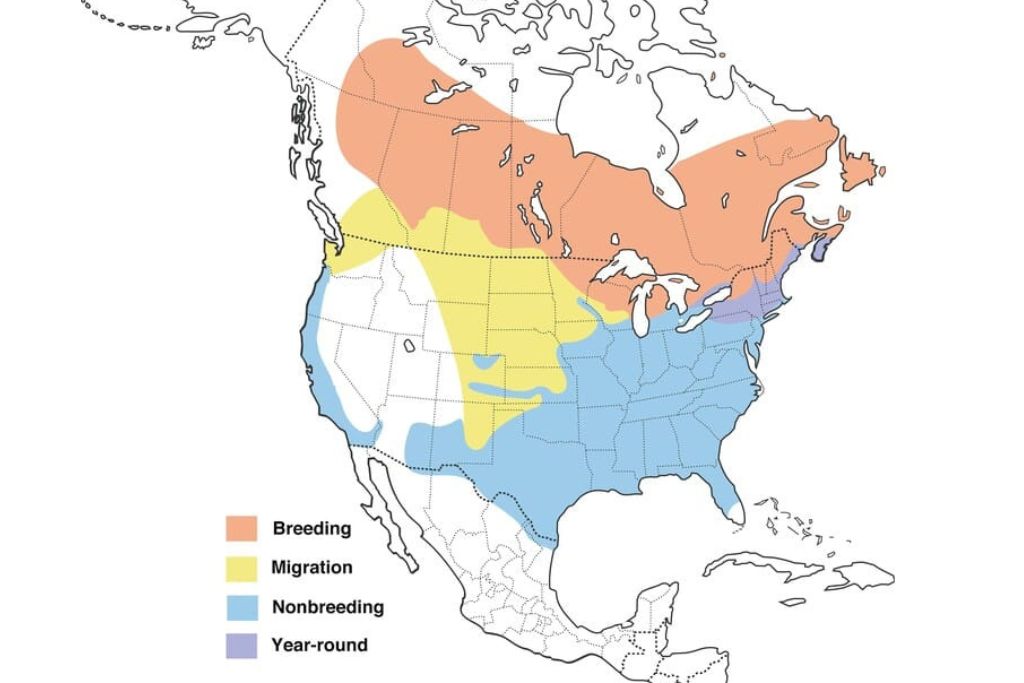
Some of the most enjoyable aspects of bird watching include observing the birds feeding and listening to their beautiful songs. Watch for these charming little birds as you explore Michigan’s beautiful wilderness.
Gray Catbird
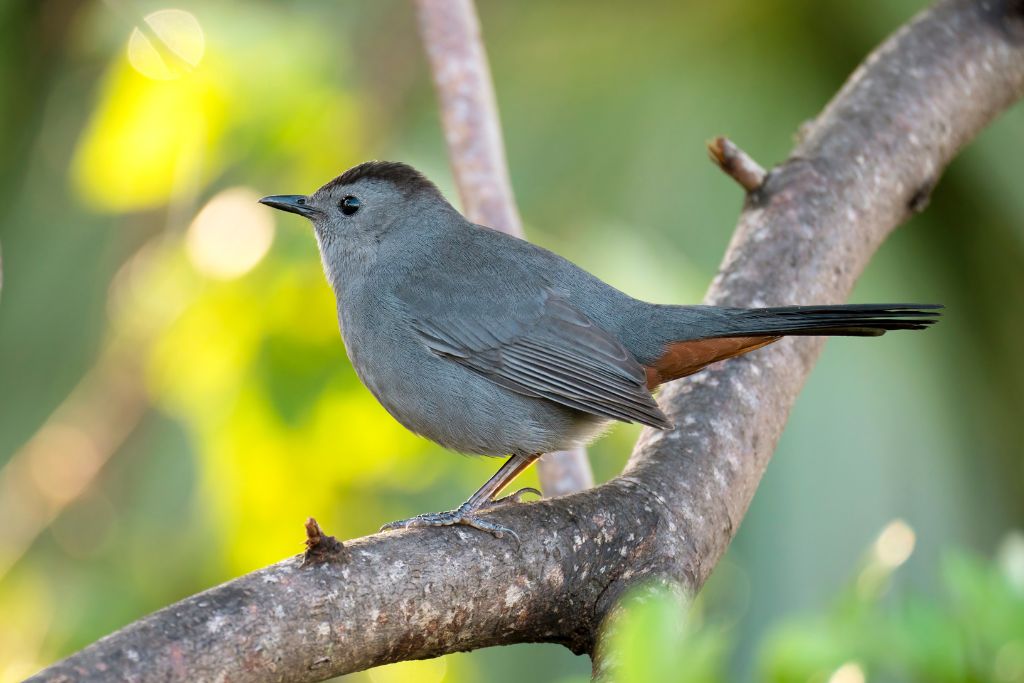
- Kingdom: Animalia
- Phylum: Chordata
- Class: Aves
- Order: Passeriformes
- Genus: Dumetella
- Species: D. carolinensis
The Gray Catbird (Dumetella carolinensis) eats a wide range of foods, including insects, berries, veggies, and even small frogs. These birds are experts at imitating sounds. They can make sounds just like the songs of other birds or sounds they hear.
During breeding, Gray catbirds build cup-shaped nests in thick bushes or on low branches. After the female lays her eggs, she and her partner take turns caring for and raising the eggs. They love their children very much and will fight to the death to protect their home.
The Gray catbird gets its name from the way it flicks its tail and makes noises that sound like a cat meowing. These things and their cute songs make them fun to watch in the wild.
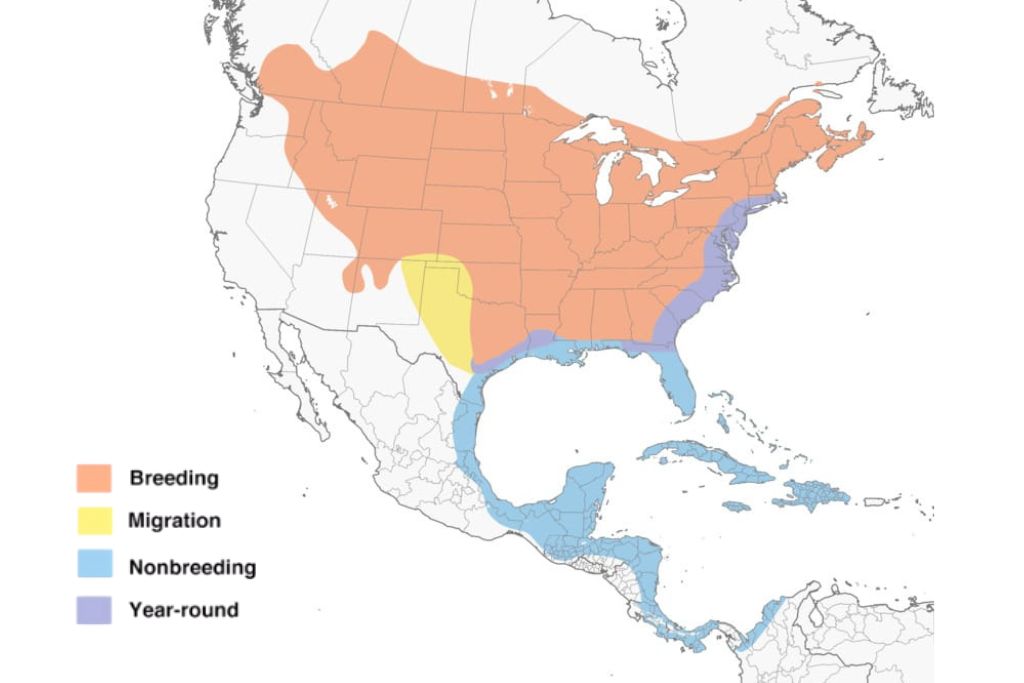
Bird watchers in Michigan like to see the Gray catbird. They are an interesting addition to birds because of their beautiful feathers, unique behaviors, and powerful voices.
As you discover Michigan’s wilderness, listen to their beautiful songs and keep your eyes open for their graceful flights through the trees.
Red-Breasted Nuthatch
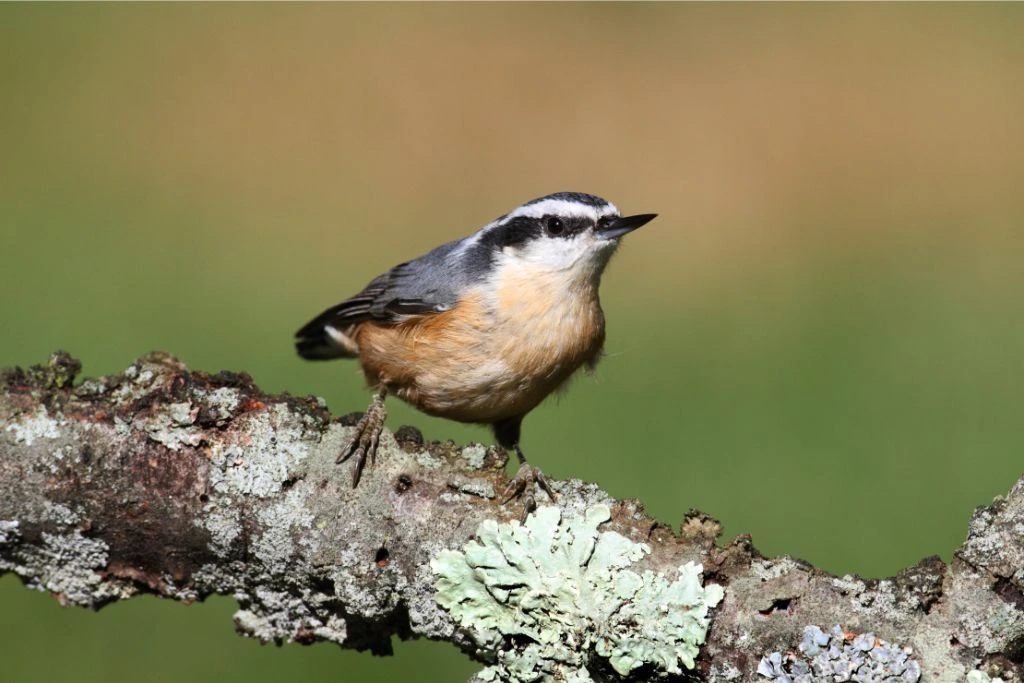
- Kingdom: Animalia
- Phylum: Chordata
- Class: Aves
- Order: Passeriformes
- Genus: Sitta
- Species: S. canadensis
Red-breasted Nuthatch (Sitta canadensis) is a small bird that can sing. It has a small body, a short tail, and a long bill with a tiny curve. The red-breasted nuthatch has bluish-gray top parts, a rusty-orange breast, and a black stripe through the eye that makes it stand out.
In Michigan, red-breasted nuthatches like to live in pine, spruce, and for woods but not in deciduous forests. Most of the time, they can be seen searching for insects and seeds on tree stems and branches by going down headfirst.
These nuthatches are very nimble and good at climbing. They like to look in the cracks and crevices of tree wood. They come to feeders with suet, peanuts, and sunflower seeds, so you can closely see their activity.

Did you know that red-breasted nuthatches’ unique call resembles a nasal “yank-yank” or “ank-ank? Unlike some migratory birds, these small birds remain in Michigan all year long, providing birdwatchers with consistent opportunities to observe them.
Carolina Wren
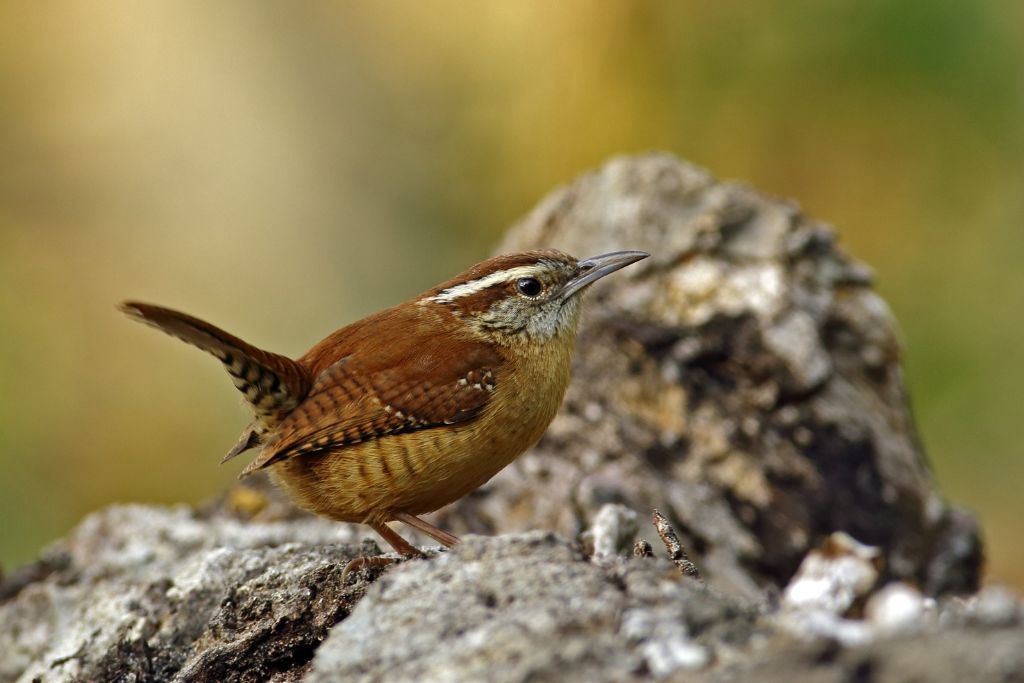
- Kingdom: Animalia
- Phylum: Chordata
- Class: Aves
- Order: Passeriformes
- Genus: Thryothorus
- Species: T. ludovicianus
The Carolina wren (Thryothorus ludovicianus) is a songbird in Michigan that is about the size of a sparrow. It is about 5.5 to 6.5 inches long, its top is dark brown, and its bottom is light brown.
Carolina wrens are adaptable birds found in woods, woodlands, thickets, and suburban areas. They have a white stripe above their eyes and sing beautifully. They use their long bills to look for insects, spiders, and small foods in cracks and among thick plants.
These wrens build dome-shaped nests in plants or holes and sing duets to show their territory. The female lays 3 to 7 eggs, and both parents care for the young until they can fly away.
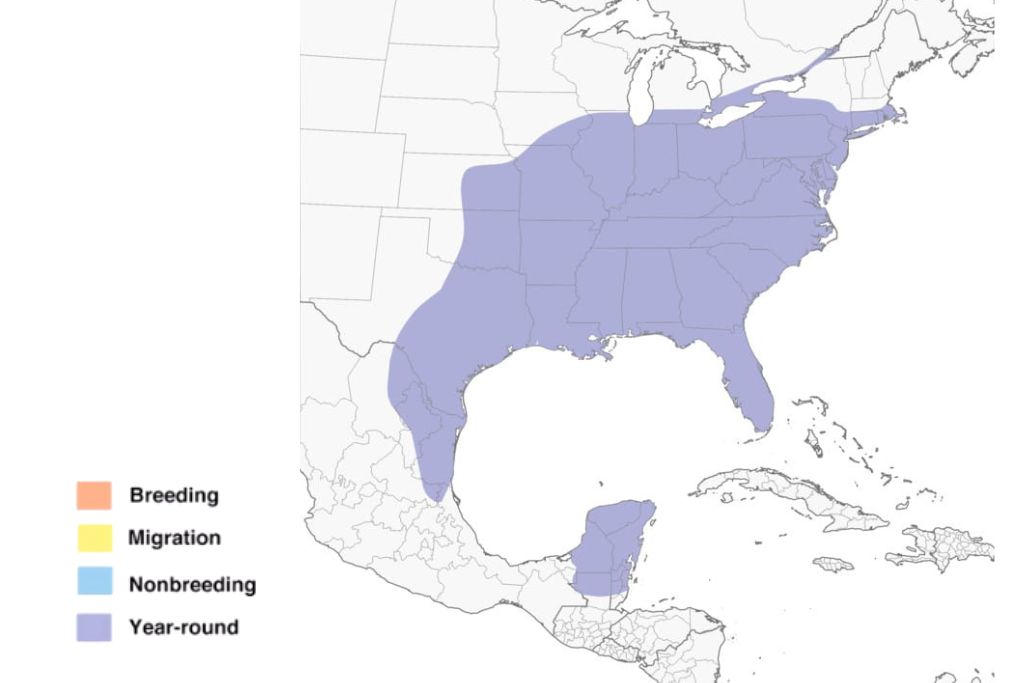
In Michigan, Carolina wrens don’t migrate; you can tell them apart by how their tails are cocked up. Look for them near trees, brush piles, low-growing plants, and places where they can nest and eat.
Common Raven

- Kingdom: Animalia
- Phylum: Chordata
- Class: Aves
- Order: Passeriformes
- Genus: Corvus
- Species: C. corax
The Common Raven (Corvus corax) is an intelligent bird found in Michigan. It has a robust body, black plumage, and a deep, hoarse croaking call. Common ravens can adapt to various habitats, including forests, woodlands, coastal areas, and even urban environments.
They are skilled fliers known for their aerial acrobatics. Ravens are omnivorous and feed on carrion, small mammals, birds, insects, fruits, seeds, and human-made food waste.
When it comes to nesting, common ravens build large nests high up on cliffs, tall trees, or man-made structures. They mate for life, and both parents participate in incubating the eggs and caring for the young.
Ravens are highly intelligent and have been observed using tools, solving puzzles, and mimicking human speech. They are social birds, often forming family groups or small communities. Ravens have a lifespan of around 15 to 20 years in the wild!
Common ravens can be found in forests, mountains, coastal areas, and urban regions in Michigan. They are more commonly seen in the northern parts of the state but are adaptable and can be encountered in other areas as well, especially during winter.

Look for ravens soaring in the sky, performing acrobatic displays, or perched on tall trees and man-made structures. Their distinctive croaking calls can be heard echoing through the landscape.
Common Yellowthroat
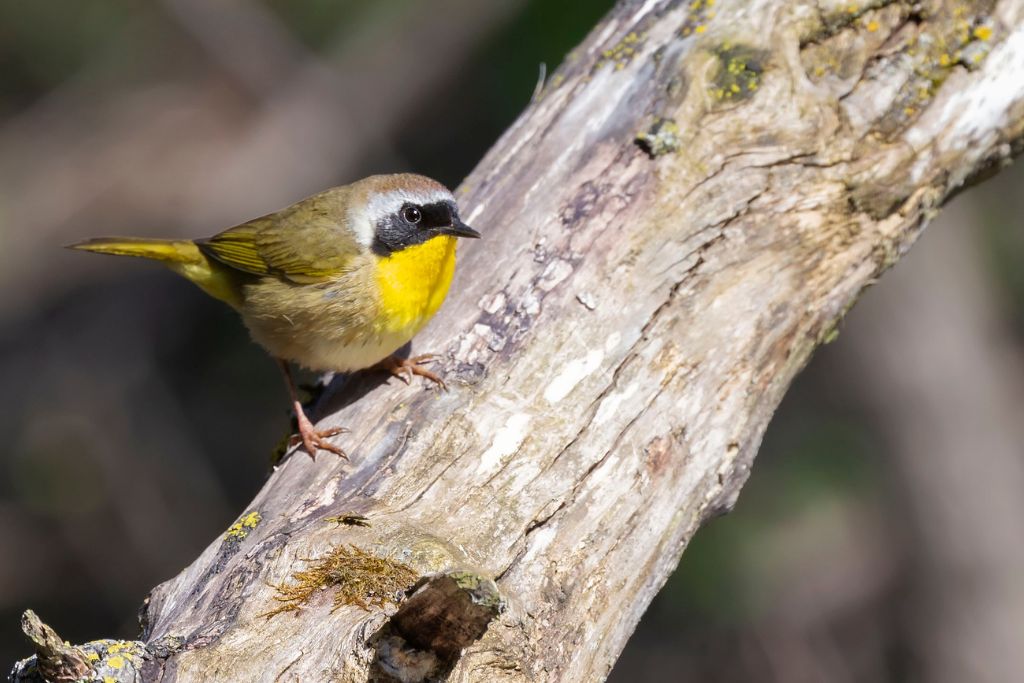
- Kingdom: Animalia
- Phylum: Chordata
- Class: Aves
- Order: Passeriformes
- Genus: Geothlypis
- Species: G. trichas
The Common Yellowthroat (Geothlypis trichas) is a small songbird commonly found in Michigan as part of the “Michigan Backyard Birds.” It has a plump body, a short tail, and a slightly curved bill.
Despite their name, the yellowthroat of the male may not always be visible due to the black mask. The male sports a black mask, a yellow throat, and olive-green upperparts, while the female has a similar appearance but with a less distinct mask. Both genders have yellow underparts. With their short wings, common yellowthroats can easily maneuver through dense vegetation.
These birds adapt to various habitats, including wetlands, marshes, shrubby areas, and grasslands across Michigan. They are skilled at navigating dense vegetation, using their agile flight and short wings. Common yellowthroats primarily feed on insects and spiders, but they also consume seeds and fruits during winter when insects are scarce.
During the breeding season, common yellowthroats construct cup-shaped nests near or on the ground, hidden within dense vegetation, or at the base of shrubs. Both parents contribute to feeding the nestlings, primarily with insects. The young birds fledge in about 8 to 10 days.
Noteworthy about common yellowthroats are their distinctive song, often described as a repeated “witchity-witchity-witchity.” They use their songs to establish and defend their territories.
These migratory birds spend their winters in southern parts of the United States, Central America, and the Caribbean.
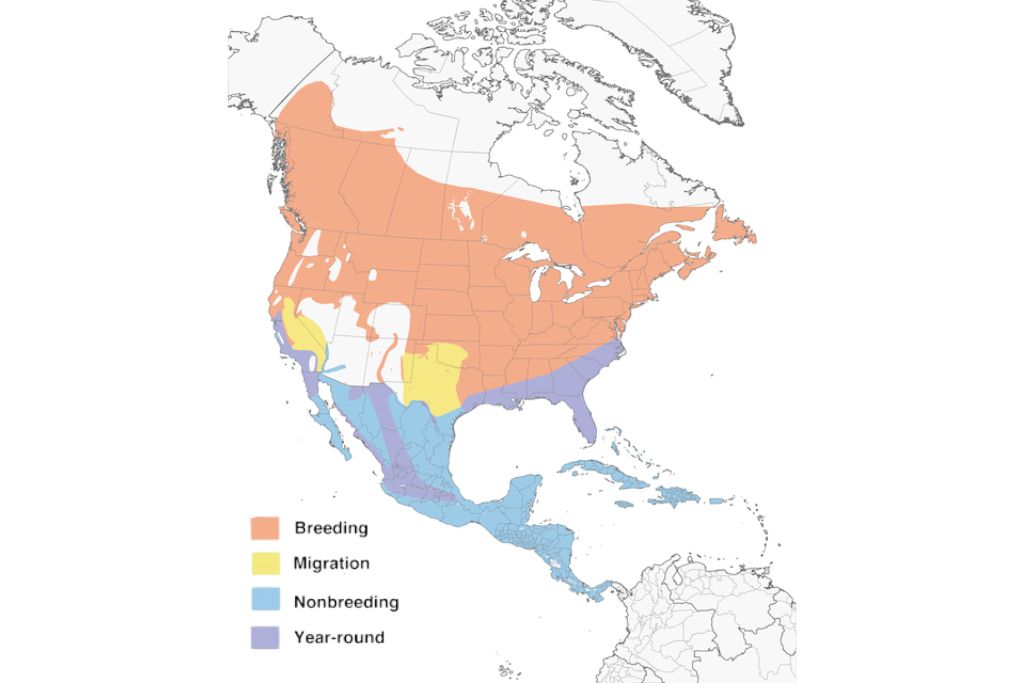
Explore wetlands, marshes, meadows, and shrubby areas to spot common Yellowthroats in Michigan. Look for their agile movements among the vegetation, listen for their unique song, and watch for flashes of yellow and black.
Creating suitable habitats with tall grasses, shrubs, and water sources can attract Common Yellowthroats to backyard bird-watching opportunities in Michigan.
Barn Swallow

- Kingdom: Animalia
- Phylum: Chordata
- Class: Aves
- Order: Passeriformes
- Genus: Hirundo
- Species: H. rust
The Barn Swallow (Hirundo rust) is a medium-sized bird with a sleek body, long pointed wings, and a deeply forked tail. It has a vibrant blue upper body, rusty-colored throat and forehead, and a pale underbody. These swallows are agile fliers known for their graceful swooping flights and aerial acrobatics.
These species can be found in a variety of habitats across Michigan, including open fields, meadows, farmlands, and wetlands. They have adapted to life on the wing, feeding on flying insects, which they catch in mid-air using their wide beaks.
Barn swallows are migratory birds arriving in Michigan in spring to breed. They form monogamous pairs and build nests together, lining them with feathers for added insulation. The female lays a clutch of 4 to 6 eggs, which both parents incubate for about two weeks.

Did you know that barn swallows are skilled insect hunters, capable of consuming hundreds of insects daily? These agile birds have a voracious appetite for insects, including flies, mosquitoes, and beetles, which they catch on the wing.
Their acrobatic flight patterns and sharp maneuvering skills allow them to swoop and glide through the air with precision as they snatch their prey.
So, the next time you see a barn swallow gracefully gliding through the sky, appreciate its amazing insect-catching talents and beautiful tunes. These birds are true flying acrobats.
Eastern Kingbirds
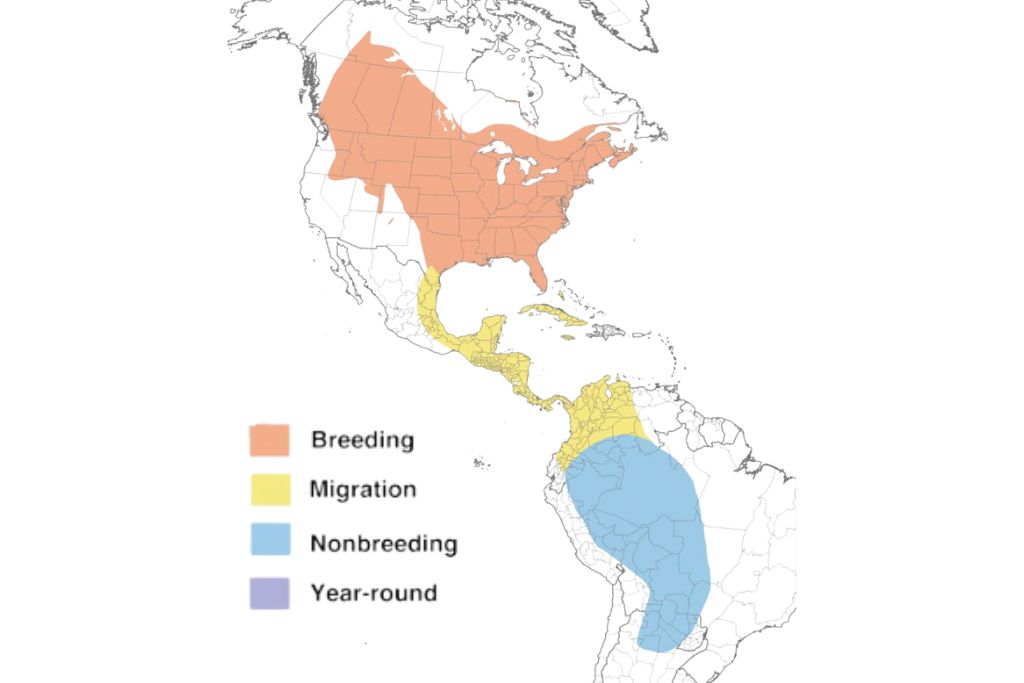
- Kingdom: Animalia
- Phylum: Chordata
- Class: Aves
- Order: Passeriformes
- Genus: Tyrannus
- Species: T. tyrannus
The Eastern Kingbird (Tyrannus tyrannus) is a medium-sized bird, measuring about 7.5 to 9 inches in length. It has a dark gray to black body, a white underside, and a small red patch on the crown of its head. These kingbirds have a robust build, a slightly notched tail, and a hooked bill.
They are commonly found in open habitats, including fields, pastures, meadows, and along rivers and wetlands in Michigan. They are skilled flycatchers, perching on exposed branches or wires and sallying forth to catch flying insects in mid-air.
Eastern kingbirds are known for their aggressive nature when defending their territories and nests, often engaging in ae to protect their nests and terrestrial pursuit and mobbing of intruders.

To protect their nests and territories, eastern kingbirds may aggressively chase away larger birds, like crows and hawks. During violent encounters, they may make a loud “kip” sound in addition to their sharp, chattering call.
These birds travel great distances to spend the winter in South America. When foraging for flying insects, eastern kingbirds are often spotted perched atop wire fences or power lines.
Yellow Warbler
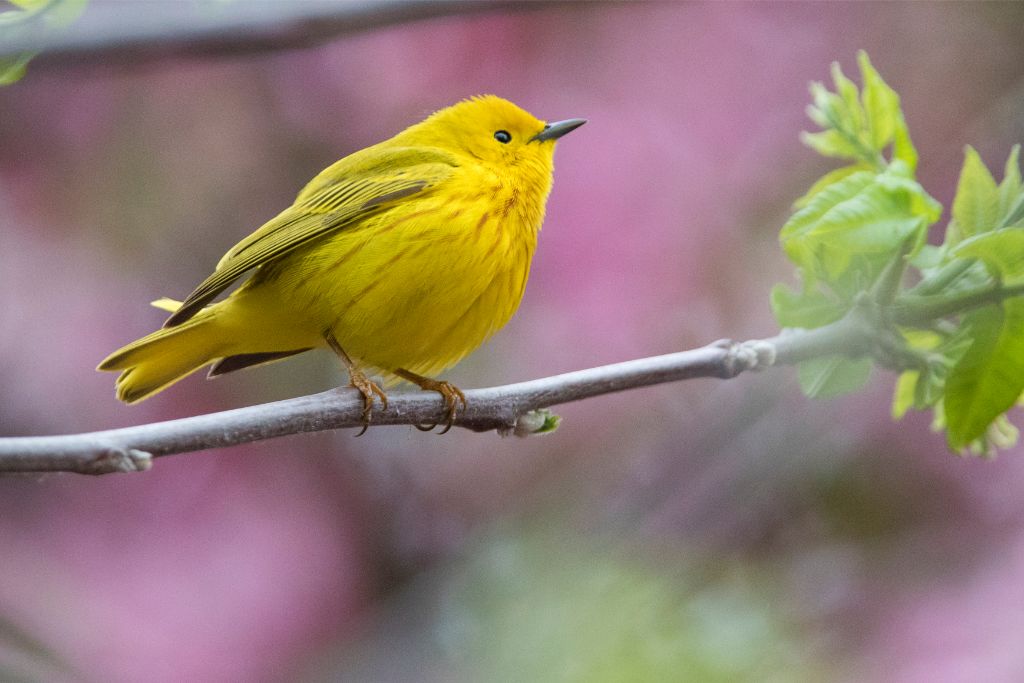
- Kingdom: Animalia
- Phylum: Chordata
- Class: Aves
- Order: Passeriformes
- Genus: Setophaga
- Species: S. petechia
Yellow Warbler (Setophaga petechia) is a small songbird measuring 4.7 to 5.1 inches. It has a bright yellow body, a rounded head, and a slender, pointed bill. Males have reddish streaks on their chest and breast, while females have a paler yellow coloration. These warblers have short wings and are known for their energetic and restless behavior.
These Michigan backyard birds, especially yellow warblers, can be found in various habitats, including wetlands, marshes, shrubby areas, and forest edges. They are well adapted to living among dense vegetation, using their slender bills to probe for insects and spiders.
They are most fond of consuming berries and fruits, particularly during the fall migration when insects become scarce.
Did you know that yellow warblers are renowned for their sweet and melodic song, often described as a delightful series of “sweet-sweet-sweet, I’m so sweet”?
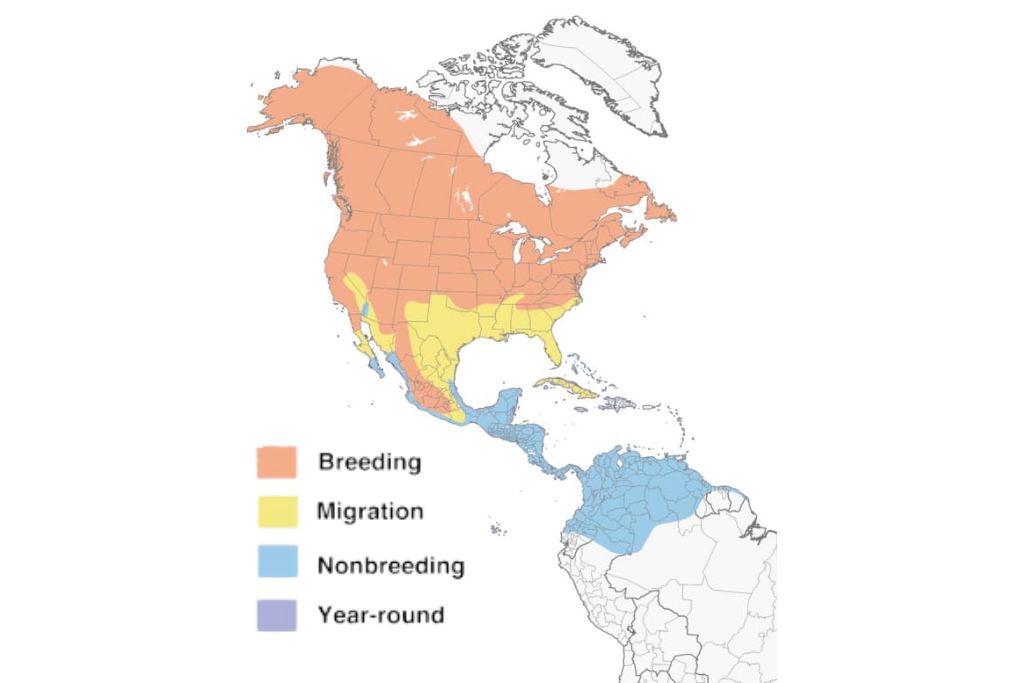
These charming little birds are gifted songsters, filling the air with their cheerful melodies during the breeding season. Their musical talents make them a joy to listen to and a welcomed presence in Michigan’s natural landscapes.
Another fascinating fact about yellow warblers is their incredible migration journey. These small birds embark on long-distance journeys, traveling all the way to Central and South America to spend the winter months.
Indigo Bunting
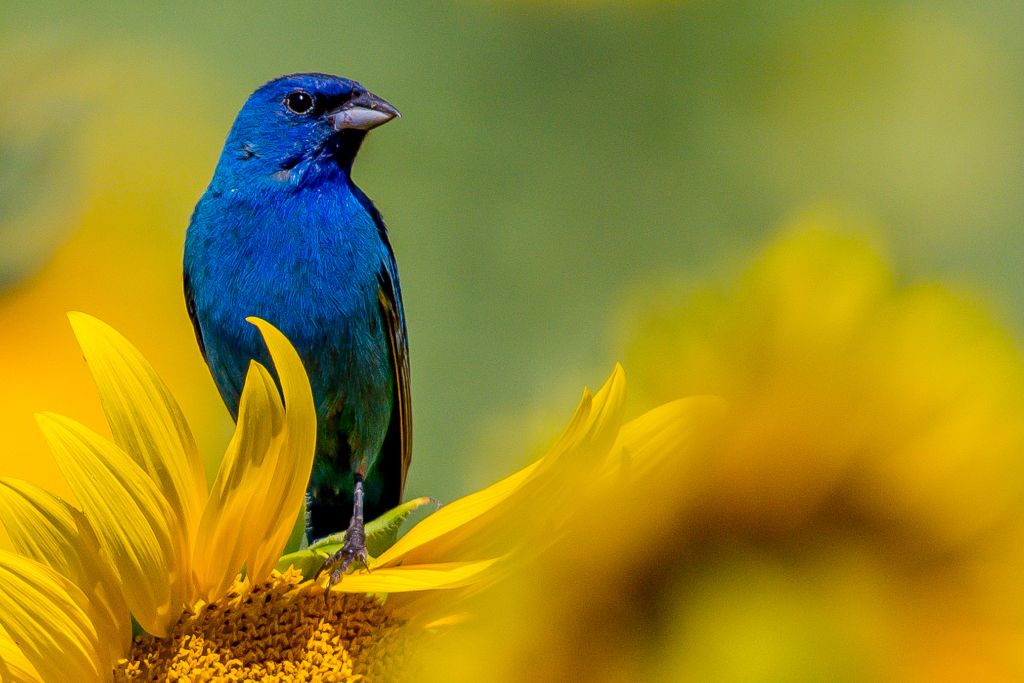
- Kingdom: Animalia
- Phylum: Chordata
- Class: Aves
- Order: Passeriformes
- Genus: Passerina
- Species: P. cyanea
The Indigo Bunting (Passerina cyanea) is a small bird, measuring about 4.7 to 5.5 inches in length. Adult males have stunning deep blue plumage, while females and juveniles are brown with streaks of blue on their wings and tails. These buntings have short wings and a conical bill.
Another fascinating fact about Indigo Buntings is their choice of habitat. These striking bluebirds can be found in open habitats, including fields, meadows, and forest edges across Michigan.
They have a preference for areas with ample vegetation and nearby water sources. This habitat selection allows them to forage for a diverse diet of seeds, berries, and insects.
Indigo buntings have specialized adaptations that aid in their foraging habits. Their conical bills are well-suited for cracking open seeds, making it easier for them to access this food source.
These small birds build cup-shaped nests made of grass, bark, and plant fibers, usually positioned low in shrubs or small trees. Both parents participate in feeding the nestlings a diet consisting of insects and seeds. The young buntings fledge after about 10 to 12 days.
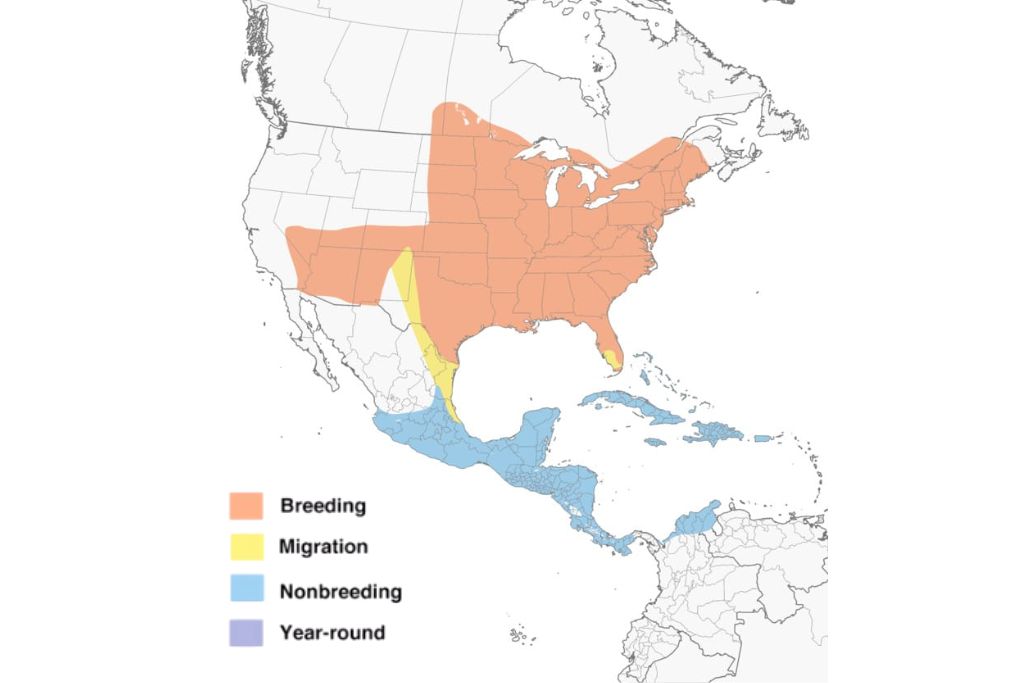
They have a sweet and melodious song that resembles a series of high-pitched notes. Indigo buntings are migratory birds traveling long distances to winter in Central and South America. They are often attracted to backyard bird feeders that offer seeds and suet.
Cedar Waxwing
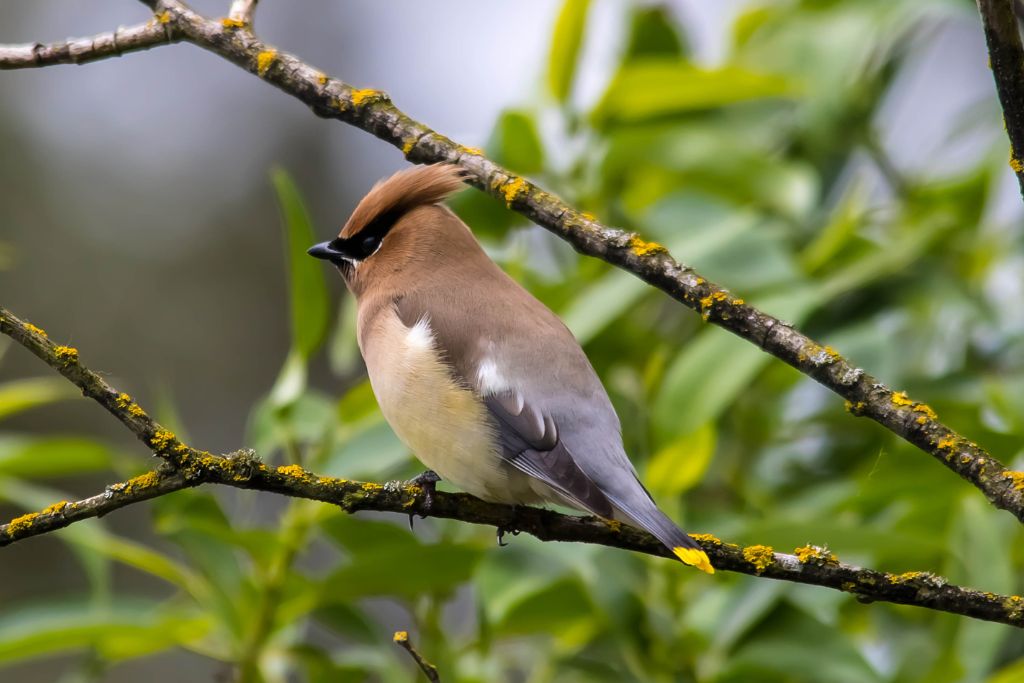
- Kingdom: Animalia
- Phylum: Chordata
- Class: Aves
- Order: Passeriformes
- Genus: Bombycilla
- Species: B. cedrorum
The Cedar Waxwing (Bombycilla cedrorum) is a medium-sized bird, measuring about 6.5 to 7 inches in length. It has a sleek, crested appearance with a grayish-brown body and a black mask extending from the eyes to the bill.
One of the remarkable features of cedar waxwings is their acrobatic flight. With their sleek bodies and pointed wings, they are skilled aerial performers. Their flight displays are truly a sight to behold and add a touch of elegance to Michigan’s natural landscapes.
Did you know that cedar waxwings are highly adaptable birds that can be found in a range of habitats across Michigan?
These charming creatures can be spotted in woodlands, orchards, and suburban areas. They have a knack for finding and feasting on berries and fruits, which form a significant part of their diet. Their specialized bill enables them to pluck berries directly from branches and even catch flying insects mid-air, showcasing their versatility as foragers.
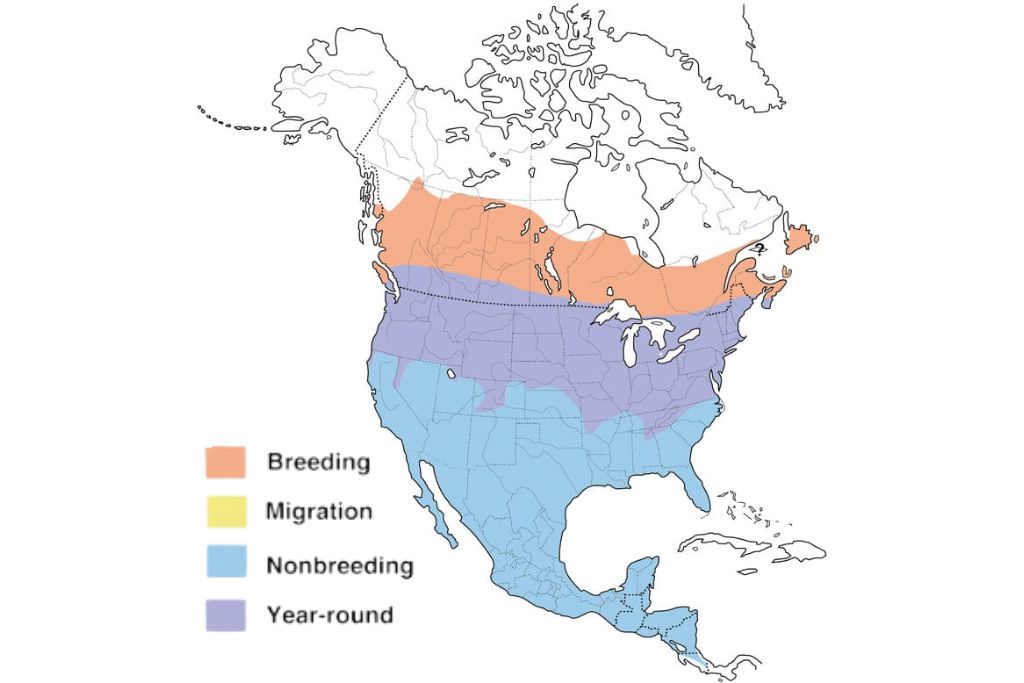
Cedar Waxwings are migratory birds, traveling in flocks to winter in southern parts of the United States and Central America. They are often observed performing a unique behavior called “cedar-waxwing passes,” where one bird passes a berry from its bill to another.
Yellow-Rumped Warbler
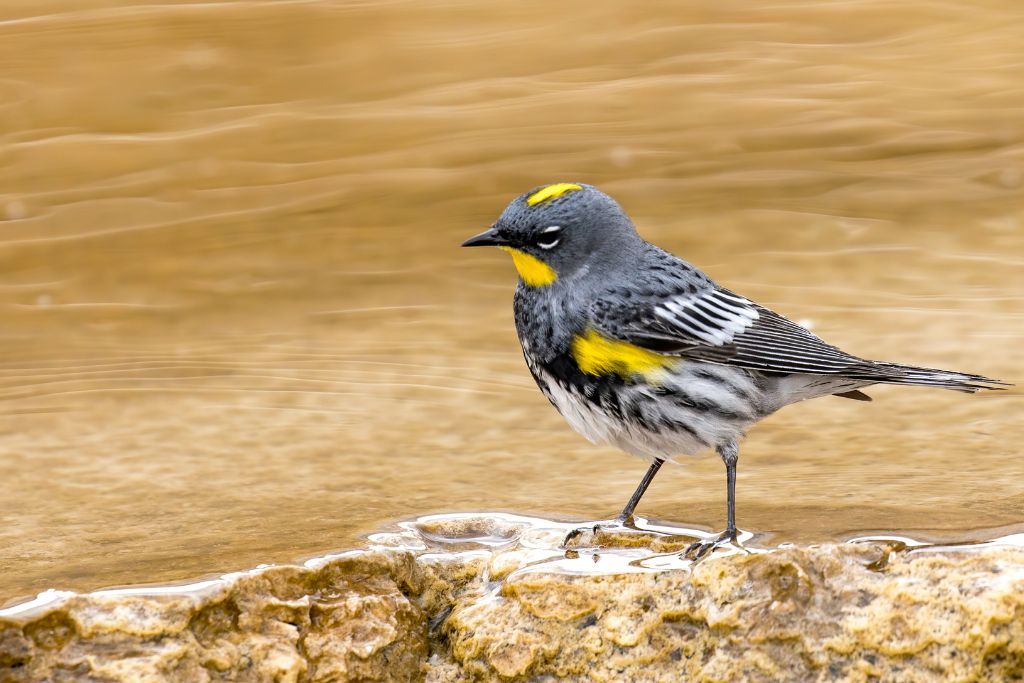
- Kingdom: Animalia
- Phylum: Chordata
- Class: Aves
- Order: Passeriformes
- Genus: Setophaga
- Species: S. coronata
The Yellow-rumped Warbler (Setophaga coronata) is a small bird, around 5.5 to 6 inches long, with a compact body, long tail, and thin bill. Males have gray backs, black faces, Yellow throats, and chests during the breeding season.
They adapt well to diverse habitats, like forests and woodlands, feeding on insects, berries, and seeds. Their cup-shaped nests are built in coniferous tree branches, and both parents care for 4 to 5 eggs.
These migratory birds make nonstop flights of over 1,000 miles between their breeding and wintering grounds in the Southern United States, Mexico, and Central America.

Yellow-rumped warblers can be seen during spring and fall migrations in Michigan’s woods, woodlands, and shrubby areas. Some of these birds breed in the northern parts of the state. Look for their yellow patches when you’re out on nature paths or in wooded areas, and listen for their “check” calls.
FAQs
What is the Smallest Bird in Michigan?
The ruby-throated hummingbird is the smallest bird in Michigan, measuring just around 3.5 inches in length. It’s diminutive size and vibrant feathers make it a captivating sight in gardens and wooded areas.
What is the Most Common Bird in Michigan?
The most common bird in Michigan is the American Robin. This common bird is seen in yards, parks, and forests with its bright orange breast and beautiful singing.
What is a Small Brown Bird in Michigan?
Michigan has several Brown House Sparrows. Male house sparrows have brown plumage with gray and black markings, while females are more muted. These birds inhabit urban and agricultural settings.


